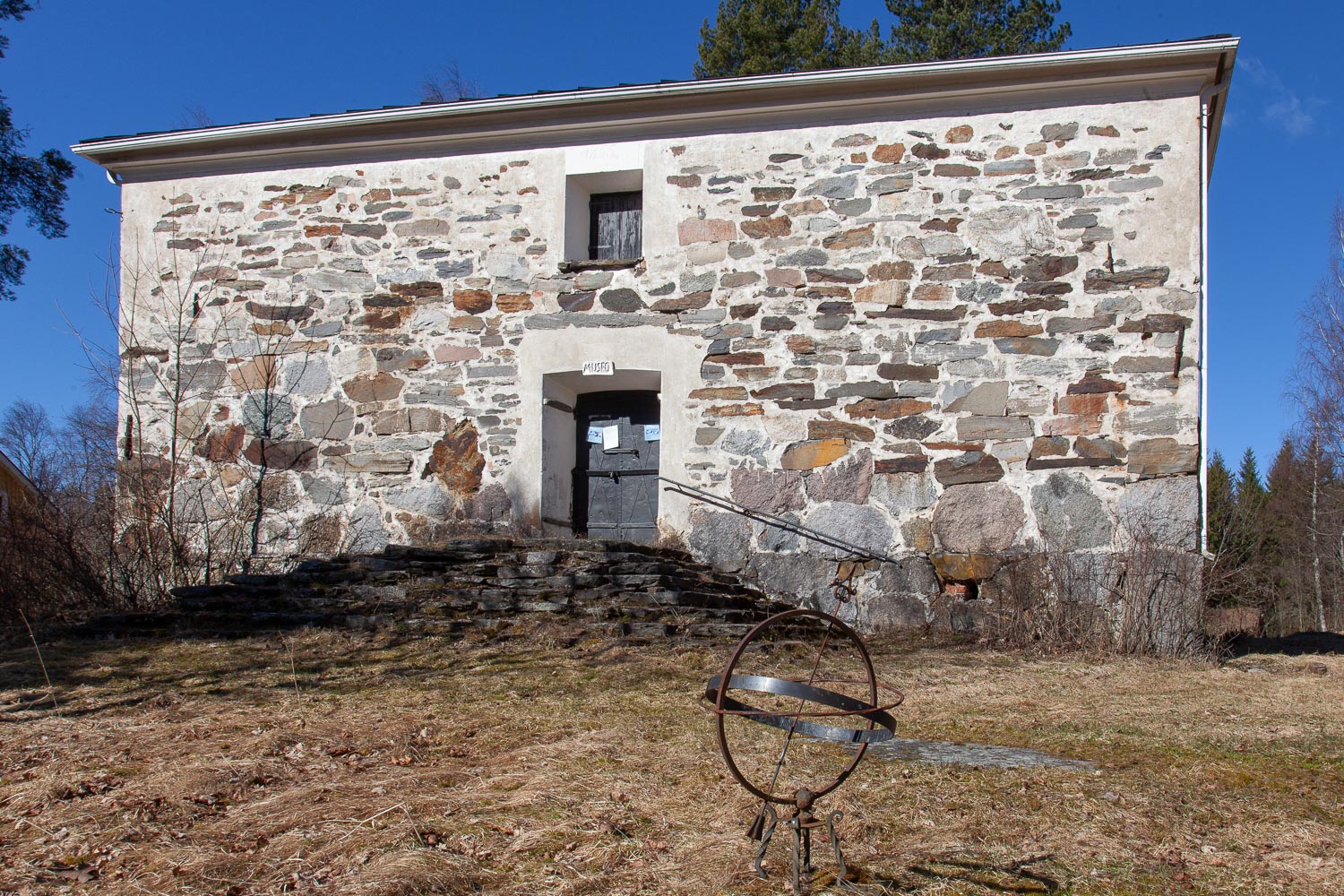Museums in Päijät-Häme
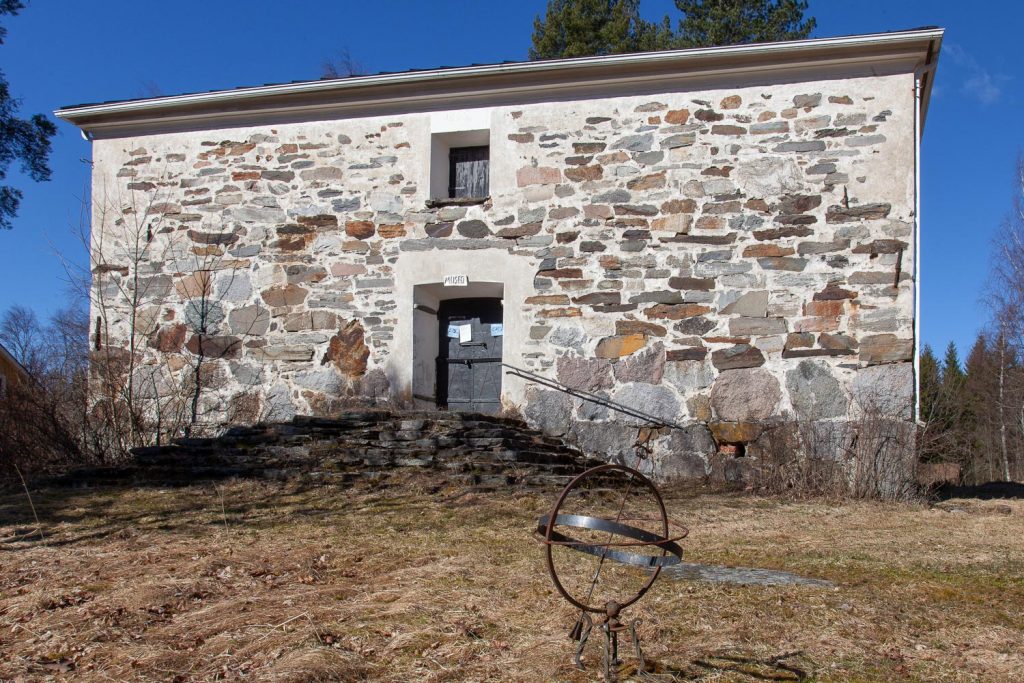
In Päijät-Häme, you can pop into a traditional museum focusing on local culture or history, or visit an art museum or a museum exploring an interesting theme – there are also a couple of manor museums in the region!
The museums in the region are quite versatile. In addition to the Lahti City Museums (i.e. the Lahti City Museums organisation), there are some thirty museums focusing on local culture or a special theme. Most of the museums can be visited during the summer season. In the wintertime, you can visit a museum in Lahti, Hartola, Heinola and Orimattila.
More information on the museums in the region, grouped by municipality, is available below. Information on the museums included in the Lahti City Museums organisation – Ski Museum, Lahti Historical Museum, Radio and TV Museum Mastola and Lahti Museum of Visual Arts Malva – is available on the museums’ own pages.
If you have any questions about the museums in the Päijät-Häme region and museum operations in general, please feel free to contact the Päijät-Häme regional museum.
More information

Päijät-Häme Regional Museum
Asikkala
-
Antti’s Automobile Museum
Located in the Vesivehmaa village in Asikkala, Antti’s Automobile Museum (Antin Automuseo) has been built in a former cowshed of Vähälä farm.The museum displays vehicles from several decades ranging from the 1950s to the 1970s. The building was renovated between 2000 and 2005 as an exhibition space for historic vehicles. The museum showcases the museum owner’s vehicles and museum vehicles owned by collectors. The exhibition changes to some extent each year. Some 30 vehicles are exhibited in the wintertime. All of the vehicles are roadworthy, and most of them are driven to some extent in the summertime.
The museum is only open by request.
Vesivehmaantie 308, 17130 Vesivehmaa
Tel. 040 555 9265
Go to museum’s websiteVehicles in Antti’s Automobile Museum.
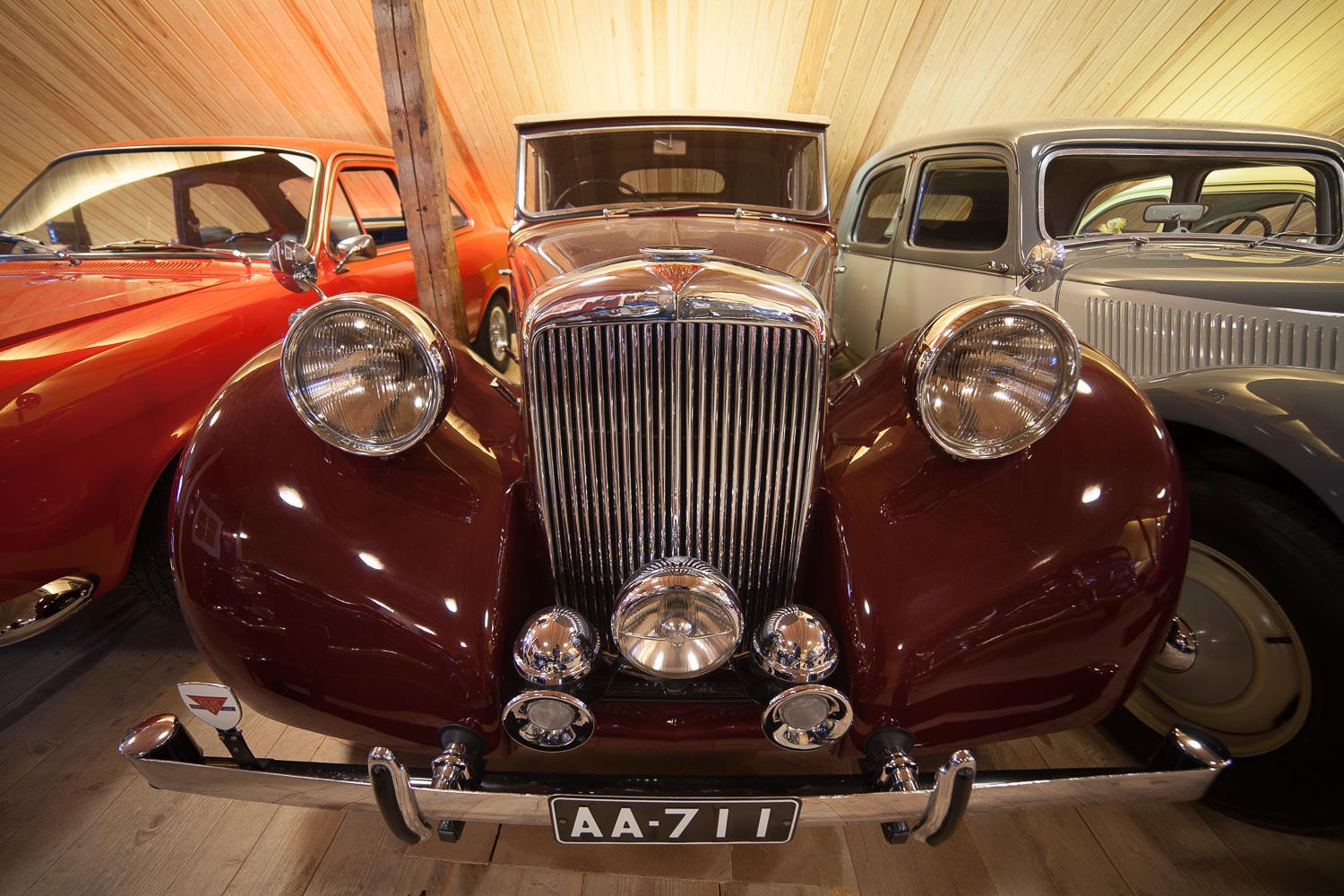
-
Asikkala Local Heritage Museum
The Asikkala Local Heritage Museum offers an interesting journey through history. The museum is part of the historic landscape of the idyllic parish village of Asikkala.The museum is located next to the Asikkala Church in an old log building, a former grain storehouse, built in 1840. The open-air museum is opposite the museum building, in the yard area of an old vicarage. It consists of traditional farm buildings. The main building that dates back to 1786, farm buildings and a stable form a traditional yard area typical for the region.
The museum showcases the life and history of the local rural community in the 19th and 20th centuries. The exhibition includes everyday objects, craftsmen’s tools and coaches. The museum also includes a separate exhibition of agricultural machinery and a small exhibition of archaeological finds made in the area. The museum is operated by the Asikkala Local Heritage Association (Asikkalan kotiseutuyhdistys ry).
The Asikkala Local Heritage Museum is open in July.
Go to the museum’s Facebook pageTel. 040 755 1309 (guide) or 040 767 0478 asikkalan.kotiseutuyhdistys@hotmail.fi
Kirkkotie 43, 17320 Asikkala
Go museum’s Facebook pageYard of the Asikkala Local Heritage Museum.
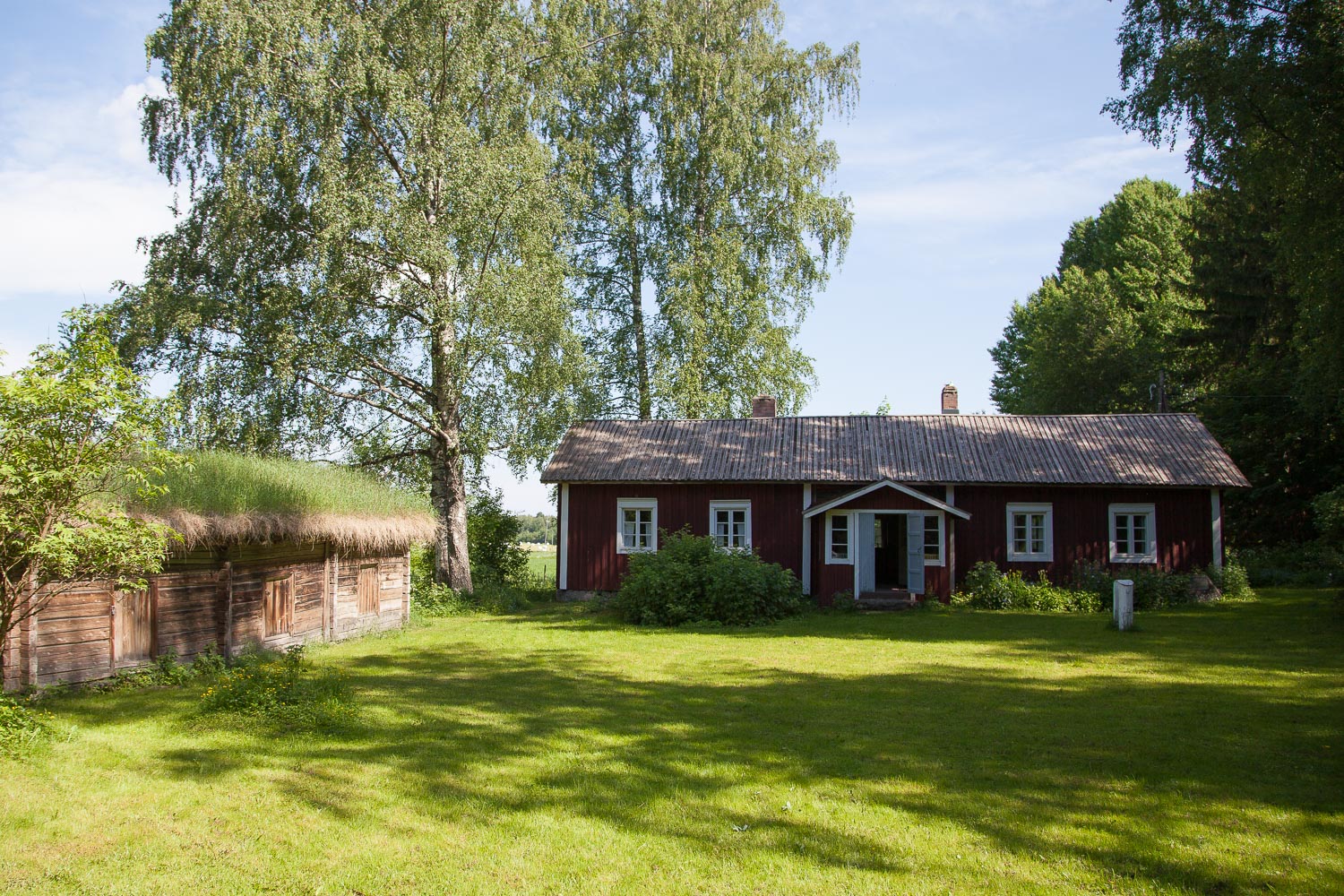
-
The neo-Renaissance style Danielson-Kalmari villa is located in Asikkala, on the banks of the Vääksy Canal. The villa is surrounded by a beautiful park with statues.
The villa was previously owned by Johan Richard Danielson-Kalmari (1853–1933), a leading Finnish historian and politician of his time. In 1892, he bought a villa in Asikkala, Vääksy for the summer home of his family.
The villa was restored in 1986, and nowadays it operates as the Danielson-Kalmari museum and an exhibition hall. The two museum rooms in the villa have been decorated as an early 20th century dining room and study. The study includes a collection of the written works of Danielson-Kalmari.
The Danielson-Kalmari villa, the museum rooms and a café are open in the summertime during exhibitions. From autumn to spring, the villa houses the Asikkala region conservatory (Asikkalanseudun musiikkiopisto). It is also possible to rent the villa for private events. The Danielson-Kalmari villa is maintained by the municipality of Asikkala.
Tel. 044 778 0661 (museum), 044 778 0276 (reservations)
matkailuinfo@asikkala.fi
Kalmarintie 8, 17200 Vääksy
Go to museum’s websiteThe Danielsson-Kalmari Villa and its garden.
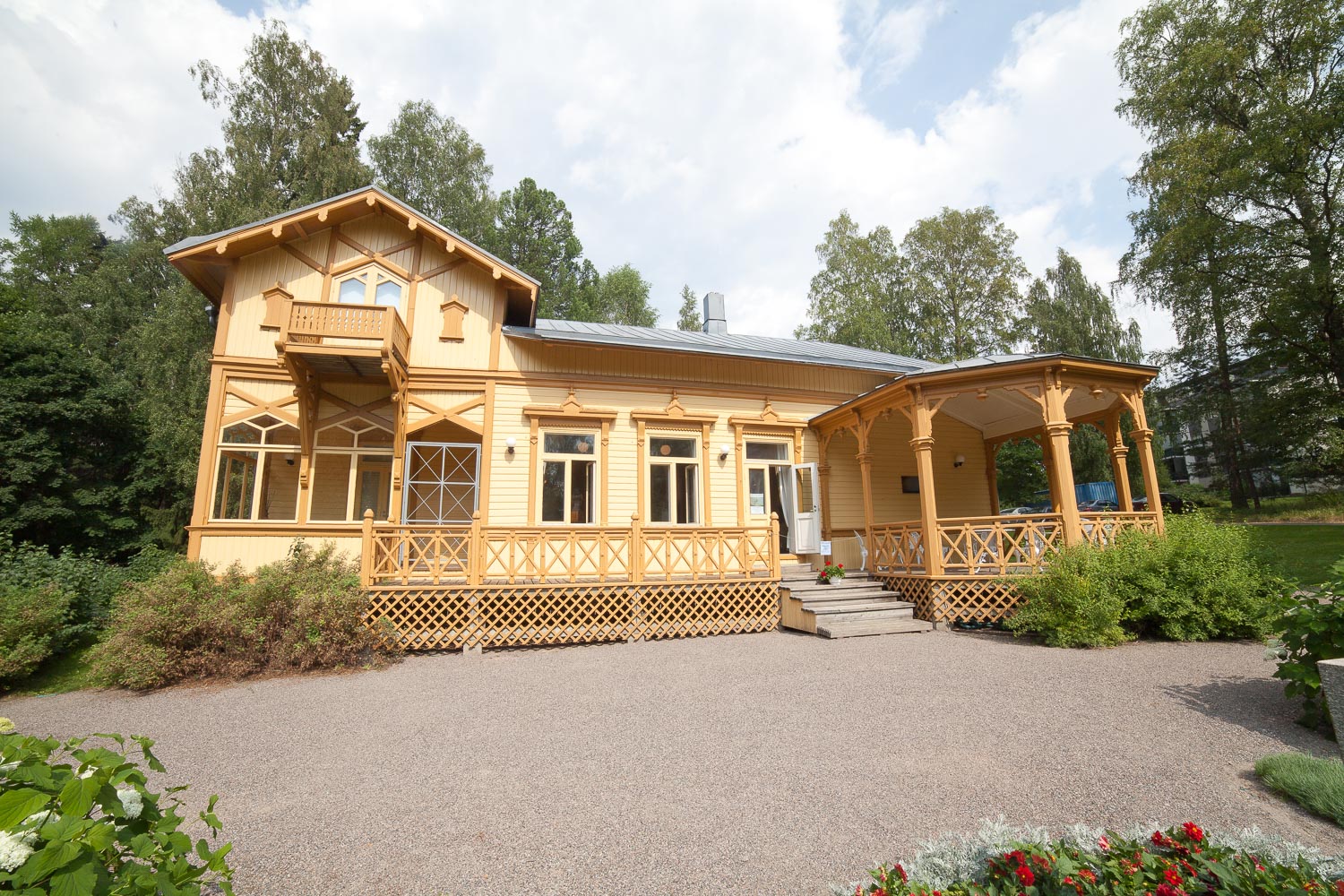
-
The Hägg’s Museum of Taxidermy (Häggin eläintäyttämön museo) is located in a hundred-year-old log building, the former studio of a taxidermist, at Korpipohja farm in the village of Urajärvi. The museum showcases objects related to the profession of taxidermist, animals taxidermied at Häggin Eläintäyttämö and contemporary objects. The museum provides information about the traditional profession of preparator that has been subsequently forgotten. It also encourages visitors to become passionate about Finnish forests and their fauna.
Guests can enjoy the delicacies of summer café Mummola during their visit. Events are also organised at the Hägg Taxidermist’s Museum: for more information, please visit the museum’s Facebook page.
Tel. 040 5858 006
hagginelaintayttamo@gmail.com
Häggintie 28, 17150 Urajärvi
Go museum’s Facebook page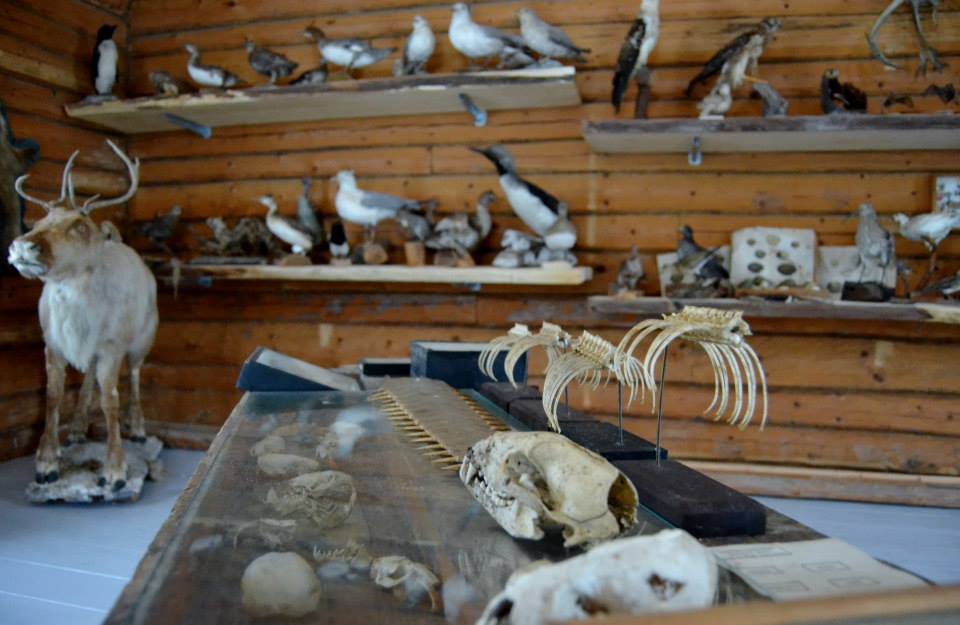
Animals at the exhibition of the Hägg Taxidermist’s Museum. -
The Päijät-Häme Aviation Museum is located at the Lahti-Vesivehmaa airfield.
The Päijät-Häme Aviation Museum showcases aircraft used by the Finnish Air Force starting from the 1920s, as well as a number of different aircraft components. The museum has the world’s only preserved Blackburn Ripon II F maritime patrol bomber, for example. The museum sells a range of new aviation books and other aviation-related materials, and organises aviation-related events in the summertime. The museum is operated by aviation association Lahden Ilmasilta ry.
The Vesivehmaa airfield and museum hangar were built at the beginning of the Second World War in 1939–1940. The airfield was used by the Finnish Air Force during WWII, and it served as a training location for the Finnish Air Force until the end of the war in 1945. Nowadays, the airfield is a busy leisure aviation hub.
Päijät-Häme Aviation Museum is open in June, July and August, as well as during the first two weekends of September on Saturdays and Sundays from 11 am to 5 pm. The museum is closed during the Midsummer weekend. On weekdays, the museum is open only by request.
Tel. 050 529 1135
lahdenilmasilta@gmail.com
Lentotie 89c, 17130 Vesivehmaa
Go to museum’s websiteA museum aircraft in the hangar.

-
The Recreational Fishing Museum of Finland (Suomen vapaa-ajankalastusmuseo) is located near the Vääksy Canal in an old dairy building, Päijännetalo.
The museum showcases the history of leisure fishing and fishing culture in the region. It also tells the international success story of Rapala lures, which began in Asikkala. The museum arranges special themed exhibitions. It is operated by the municipality of Asikkala and the Finnish Fishing Museum Association (Suomen kalastusmuseoyhdistys ry).
Päijännetalo also includes the Salpausselkä Geopark exhibition, Asikkala tourist information and a versatile gift shop. Päijännetalo is open during the summer season, from May to September.
Tel. 044 778 0680, 044 778 0701
matkailuinfo@asikkala.fi
info@suomenkalastusmuseo.fi
Meijeritie 1, 17200 Vääksy
Go to museum’s websiteA wall painting of lake fish.
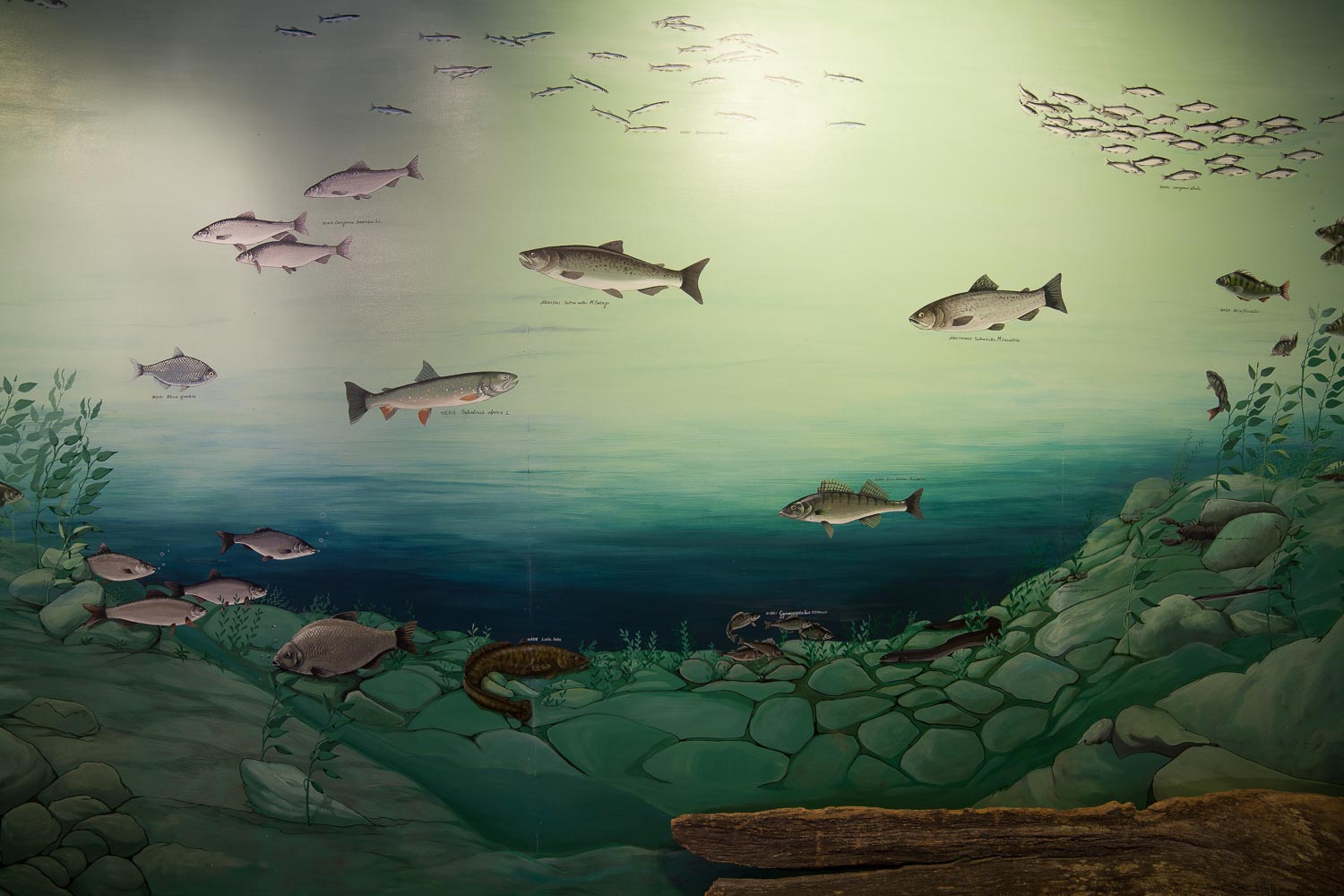
-
The Tupala Farm Museum is located in the Myllykselä village in Asikkala.
The roots of the Tupala family farm extend to 1539. The farm’s wooden buildings from the early 19th century form a closed courtyard. In addition to a main building from 1841, the museum includes an old drying barn, a horse gin, a sauna and a storage building through which a vehicle can be driven. Old farming equipment can be seen in the buildings, and the main building has been decorated in the style of the early 20th century.
The Tupala Farm Museum is a private home museum that is only open by request.
Tel. 050 501 1610
Myllykseläntie 224, 17450 Iso-Äiniö
Go museum’s Facebook pageThe yard area of the farm museum.
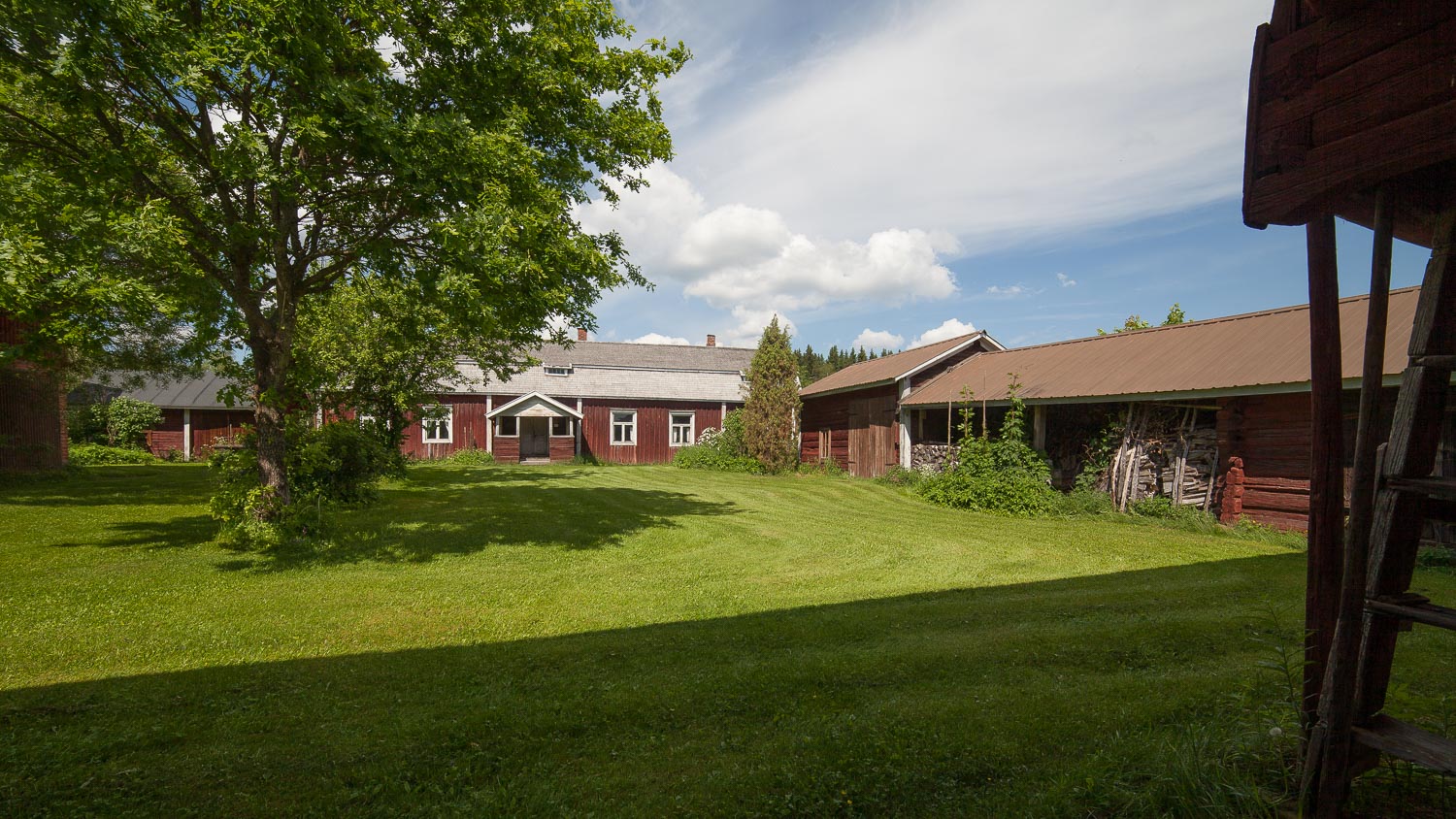
-
The Urajärvi Manor Museum is located in the Urajärvi village in Asikkala, on the southern shore of Lake Urajärvi.
For almost 350 years, the Urajärvi Manor was owned by Baltic-German family von Heideman. The last representatives of the family, siblings Lilly (1849–1917) and Hugo (1851–1915) von Heideman, bequeathed their beloved home manor to be maintained as a museum. The siblings’ home and its atmosphere from the turn of the 20th century have been maintained in the Empire-style main building. An old wing houses a museum, which was already established by the siblings during their lifetime. It showcases older objects of the family.
The current appearance of the manor dates back to the 1840s. The old wing, or the old museum, was built after the mid-18th century. In addition to these, there are other buildings in the yard area.
The manor includes an English-style park with “master Hugo’s path”. The path ends at Valhalla, a vantage point with a semicircle colonnade similar to an ancient temple. Valhalla offers a spectacular view over the lake.
The Urajärvi Manor Museum is one of the oldest manor museums in Finland. It was opened to the public in 1928. The manor was extensively renovated between 2009 and 2013. The manor museum is operated by the museum’s supporter association Urajärven Kartanon Ystävät ry.
The Urajärvi Manor Museum is open in the summertime, from June until the end of September.
Tel. 044 239 9759
urajarvenkartano@gmail.com
Kartanontie 77, 17150 Urajärvi
Go to museum’s website
Go to museum’s mobile guideAn oil lamp in one of the bedrooms of the Urajärvi Manor.
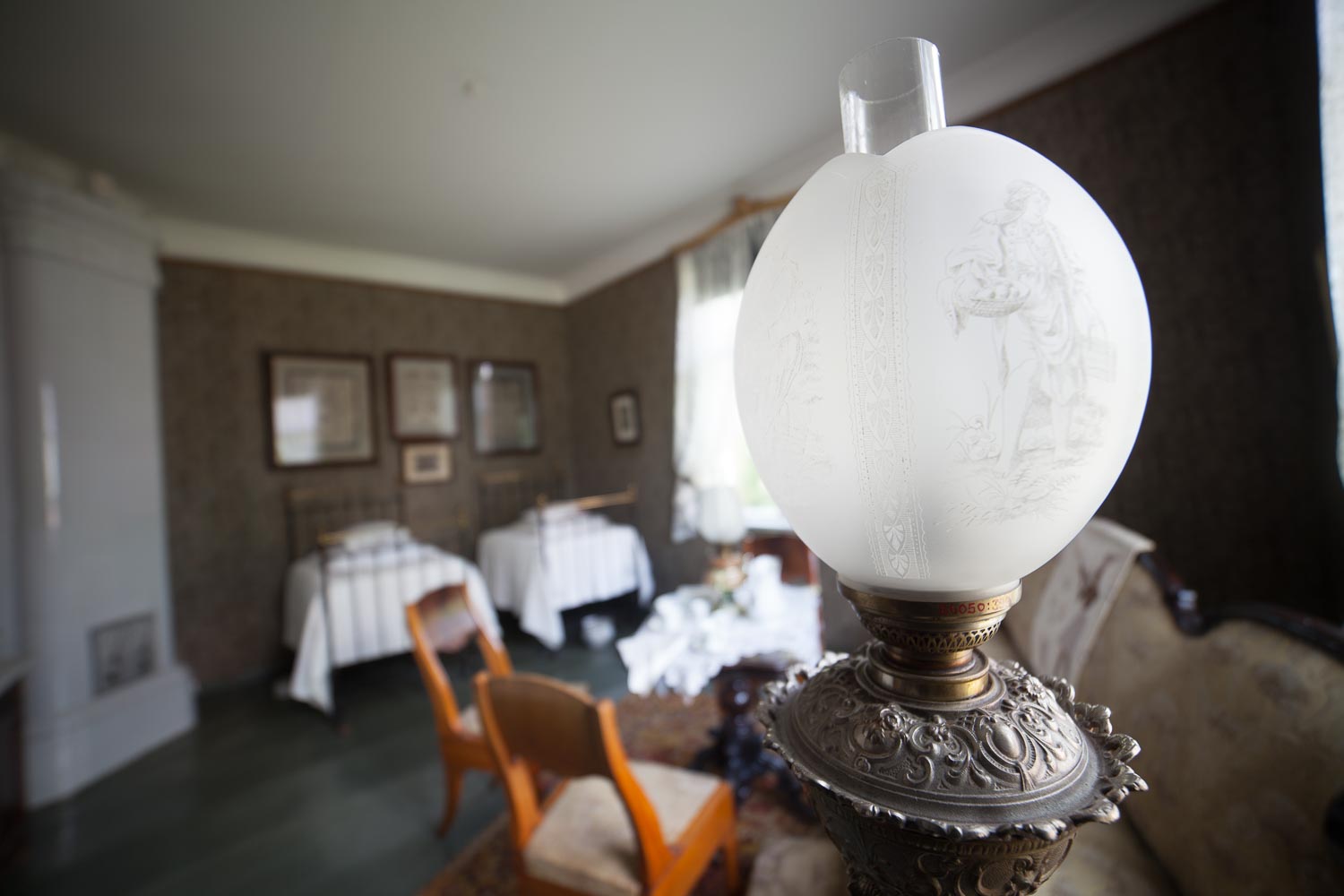
-
The Vääksy Water Mill and Power Plant Museum is located right next to the beautiful Vääksy Canal on the bank of Vääksynjoki River. The museum showcases life of the bygone ages and a key source of livelihood, grain milling.
Vääksynjoki River has had water mills since the 15th century. Established in 1985, the museum is located in an old mill dating back to the 1750s. At the museum, you can explore the history and operation of water-powered mills and hydroelectric power plants. The museum also exhibits a waterwheel. There are grain and flour measures and tools used at the mill. The visitors can also try grinding with a handstone themselves.
The museum is open in the summertime, and a variety of events are organised there. The museum is operated by the municipality of Asikkala.
Tel. 044 778 0661
matkailuinfo@asikkala.fi
Vääksyntie 15, 17200 Vääksy
Go to museum’s websiteThe waterwheel at the Vääksy water mill.
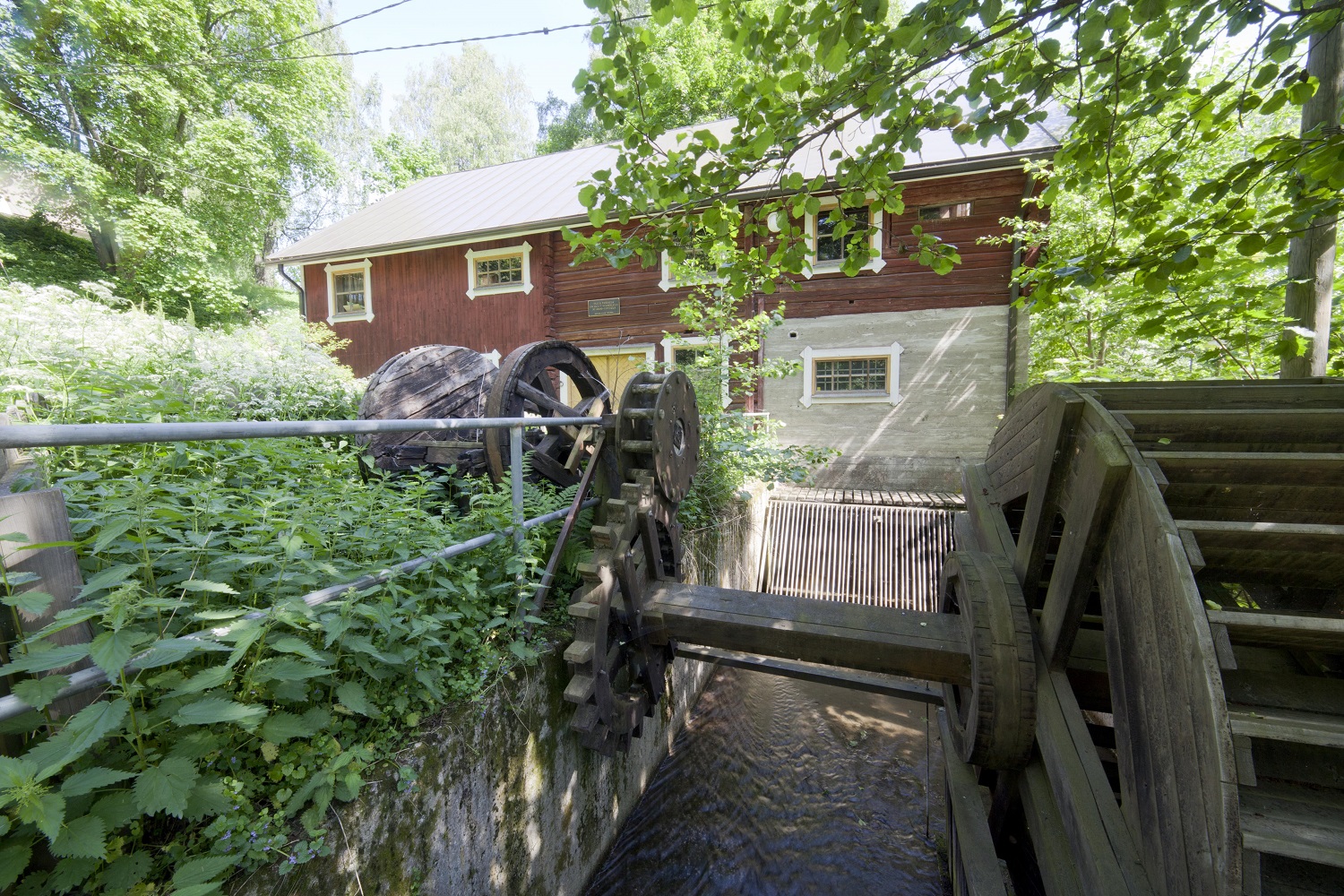
Hartola
-
The Itä-Häme Museum is located in Koskipää Manor, on the green banks of the Tainionvirta River. The Itä-Häme Museum is the regional museum of seven local parishes. It was opened in 1929. The museum was founded by Finnish author Maila Talvio.
The Koskipää Manor has been one of the largest manors in the area, and its history extends all the way to the 16th century. The museum area includes the main building of the Koskipää Manor dating back to 1828 and a chimneyless hut from the 17th century. There is also a building with a dinner bell from the 1820s, basements under the building from the 1750s, a carriage shed and a windmill. The windmill is the only building that has been moved into the area; the other buildings are at their original places.
In addition to manor life from the 19th century, the museum showcases the area’s farming culture and ethnological objects. The modest interior of the chimneyless hut from the 19th century is very different from the grandeur of the manor, but it offers a good idea of how commoners used to decorate their homes for the holidays. The exhibits also include a reconstructed office of the founder of the museum, Maila Talvio, from her home in Helsinki, as well as memorial rooms for the Finnish poet Uuno Kailas and author Mika Waltari. More recent history of the region is represented by an exhibition called Vuoksenranta, which showcases objects brought to the region by people who were forced to flee the Second World War from the municipality of Vuoksenranta in South Karelia. Nowadays, Vuoksenranta is in Russia.
Vanha-Koskipää, the manor’s former main building from the 18th century, is located right next to the Itä-Häme Museum. The building houses an art exhibition, Taidesalonki Talvio, in the summertime. The Itä-Häme Museum is open daily from 11 am to 6 pm (from noon to 4 pm during the winter season). You can visit the museum with a Museum Card.
Tel. 03 716 1252, 044 0770 149
info@ihmuseo.fi
Koskipääntie 1, 19600 Hartola
Go to museum’s website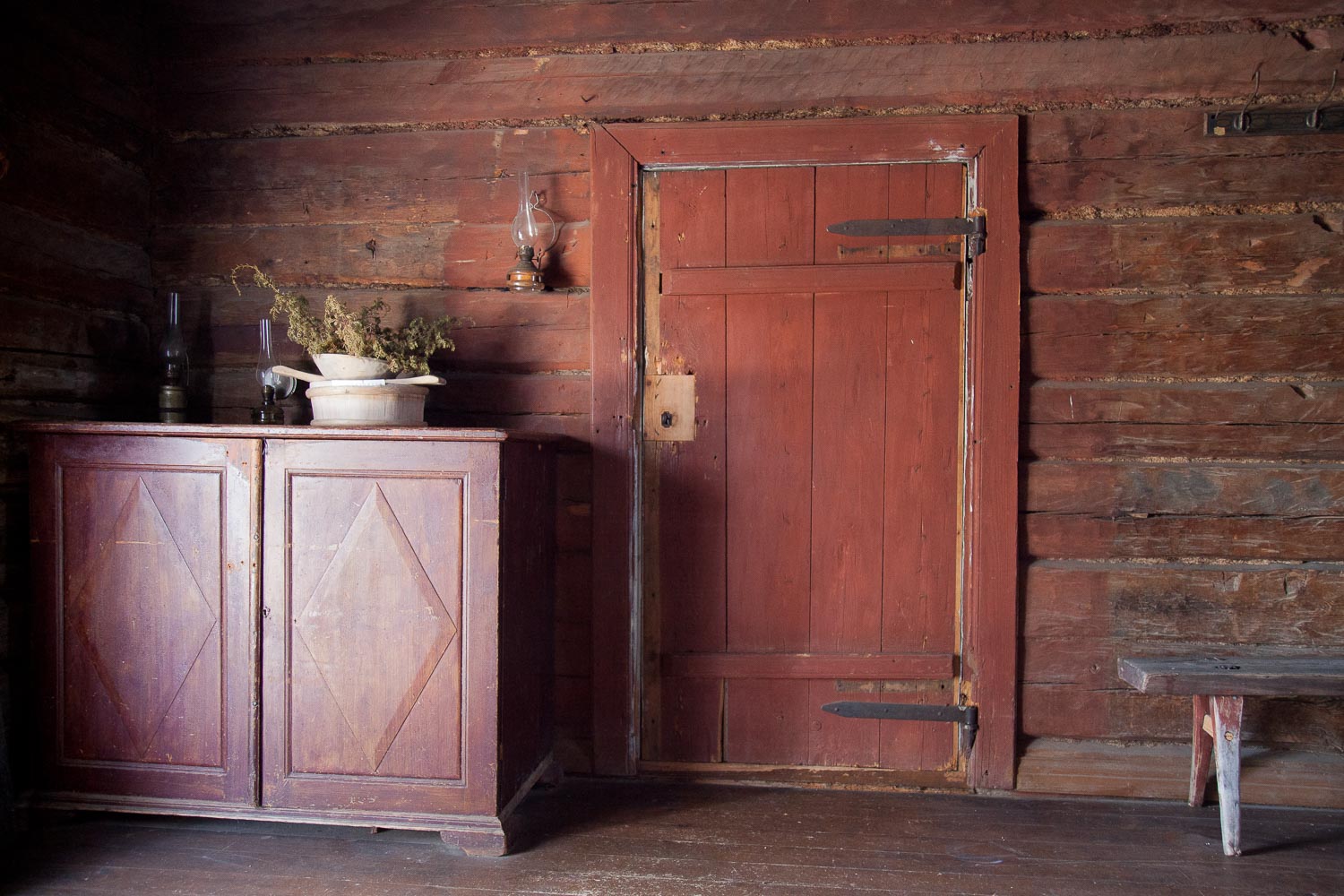
Heinola
-
The Heinola City Museum (Heinolan kaupunginmuseo) is located right in the heart of Heinola, in a charming wooden building dating back to the year 1872. Completely renovated in 2020, the museum offers experiences for all senses.
In the Made in Heinola exhibition, visitors can explore the city’s cultural heritage in a variety of ways. The story of the exhibition takes the visitor from the prehistoric times of Heinola all the way to the post-WWII era. Many objects made in Heinola or used by the local people are on display. Many of the objects belonged to interesting local people, such as the first settlers of the region, one of the Presidents of the Republic of Finland or the popular rock band Apulanta. At the exhibition, visitors can also explore images from the museum’s own collections, a scale model of Heinola and interiors from different eras.
Children can embark on their own journey of discovery in the exhibition by searching for the museum’s mouse family with a map and stickers. The museum gift shop offers unique articles for everyday use and gifts made in Heinola, as well as books.
The Heinola City Museum is open on Tuesdays and from Thursday to Sunday from 11 am to 4 pm and on Wednesdays from 11 am to 6 pm. You can visit the museum with a Museum Card.
Tel. 044 769 4215
museo@heinola.fi
Kauppakatu 14, 18100 Heinola
Go to museum’s website
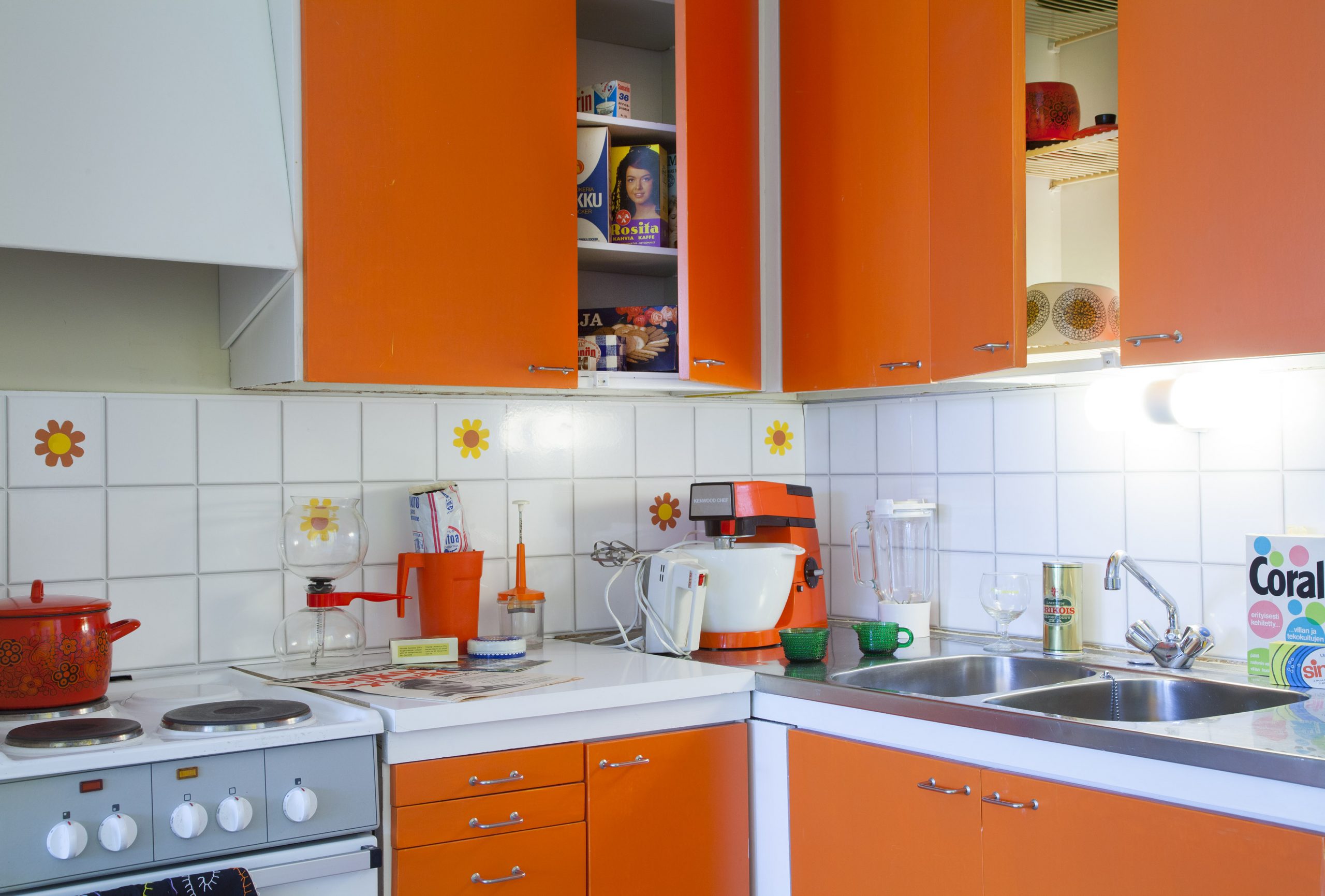 A kitchen at the Heinola City Museum. Niclas Warius/Heinola City Museum.
A kitchen at the Heinola City Museum. Niclas Warius/Heinola City Museum. -
The Heinola Art Museum (Heinolan taidemuseo) is located right at the heart of Heinola. The Empire-style museum building was originally built in 1830 as the home of merchant Aleksander Toropoff’s (1780–1852) family. The building master was carpenter Jacob Nygrén (1768–1836), and features typical of him can be seen in the form of rose and bay leaf decorations on the interior doors and exterior windows. The building was renovated in 1985–1986 to be used as an artisans’ house, and it has housed the Heinola Art Museum since 1991.
The collection of the Heinola Art Museum consists of approximately 1,100 works of art. Most of them are Finnish art from the 20th and 21st centuries. The museum permanently exhibits the collections of Spranger and Henry Lönnfors that showcase European porcelain from the 18th to the 20th century, and the library of Minister P.J. Hynninen Art Foundation, which is retained by the museum. The museum arranges exhibitions all year round.
The Heinola Art Museum is open from Thursday to Sunday from 11 am to 4 pm and on Wednesdays from 11 am to 6 pm. You can visit the museum with a Museum Card.
Tel. 044 469 4363, 044 769 4216
museo@heinola.fi
Kauppakatu 4, 18100 Heinola.
Go to museum’s websiteA sculpture in front of the Heinola Art Museum.
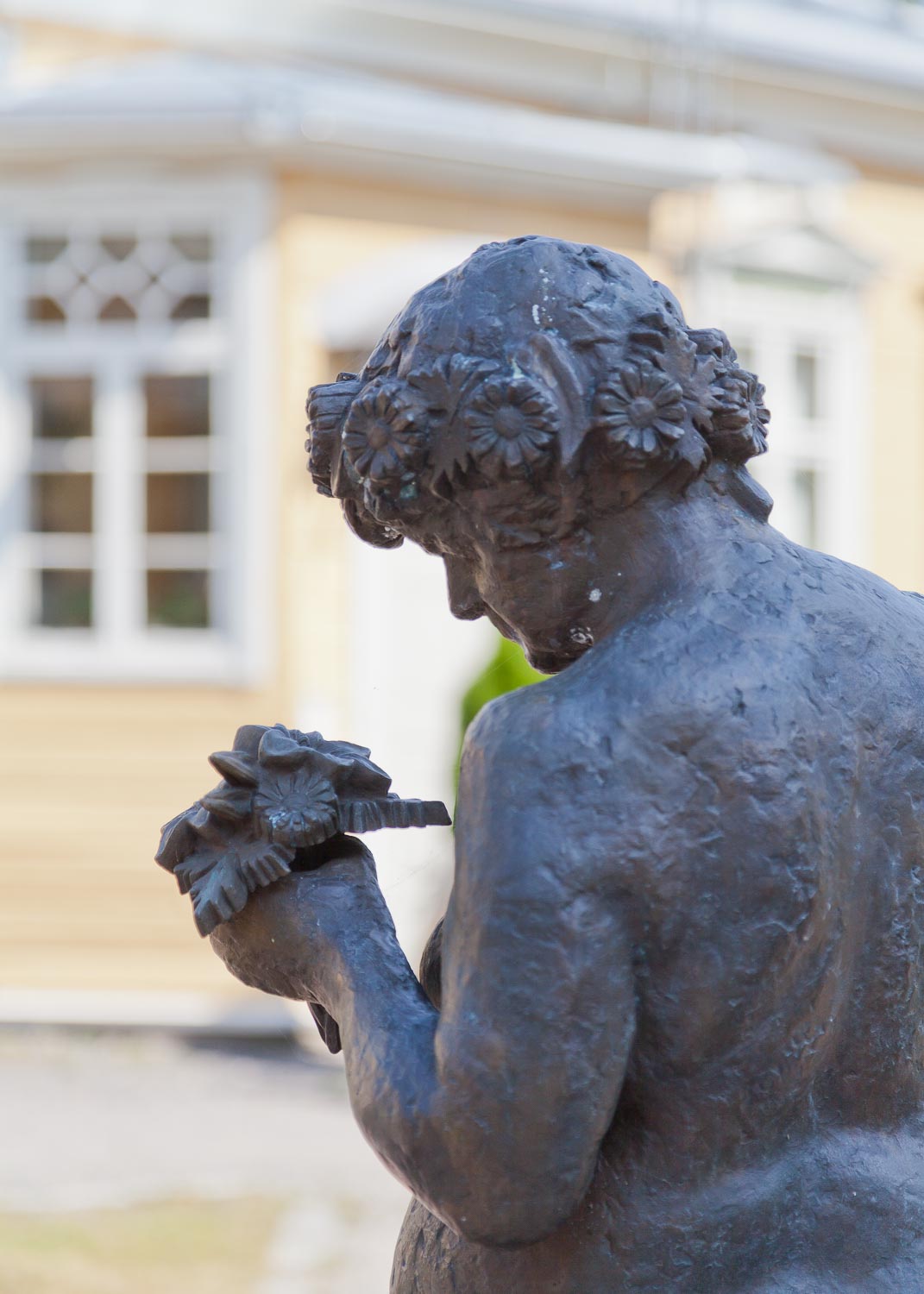
-
The Aschan House, the former home of the family of chief constable Aschan, is located in downtown Heinola. It is an urban home milieu from the 18th century, which is unique in inland Finland.
When entering the house’s yard and garden through the gate, you will step back 200 years in time. Inside, the Gustavian furniture, wallpaper, utility articles, doors and windows tell the story of Heinola in the times of the governor, offering visitors a unique atmosphere. The garden has been designed in the style of the late 18th century, and useful and ornamental plants from the era are grown there every summer. Around Christmas and the turn of the year, the house celebrates Christmas in the style of the late 18th century with candlelight and the scent of spices used during that era.
The house was completed in the early 1780s as the home of the family of the Kymenkartano county chief constable. The current yellow ochre horizontal cladding of the building with a gambrel roof and six-square windows date back to a renovation in the 1840s, which was the most recent major renovation of the house. In many respects, the house represents a typical building of 18th century Heinola. The interior has been almost completely retained its 18th century appearance. The rooms include Gustavian wallpaper, rococo doors with three panels, as well as ceilings and floors dating back to the construction year.
The Aschan House is open in the summertime, from 1 June to 31 August, and during the holiday season in the wintertime on Tuesdays and from Thursdays to Sundays from 11 am to 4 pm and on Wednesdays from 11 am to 6 pm. You can visit the museum with a Museum Card.
Tel. 044 469 4363, 044 769 4217
museo@heinola.fi
Kauppakatu 3, 18100 Heinola.
Go to museum’s websiteThe yellow Aschan House with its gambrel roof.
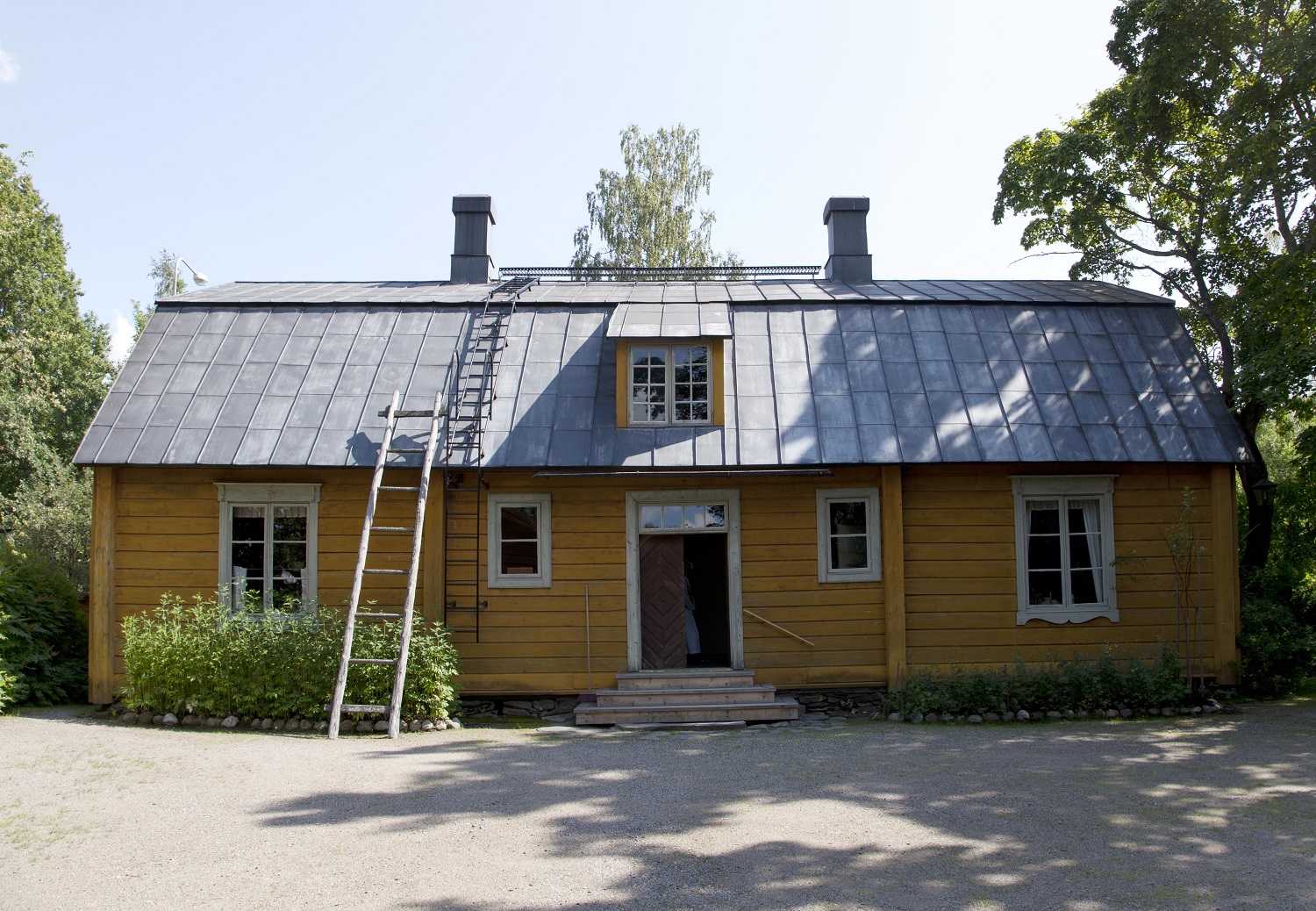
Hollola
-
Located in Herrala, Hollola, the Shoemaker Cottage Museum of Heikan Jussi is the legacy left behind for the village by a local shoemaker, Juho Mäkäräinen (1892–1967) or “Heikan Jussi”. The museum was founded in 1967 on the basis of Mäkäräinen’s last will and testament.
The home museum showcases the modest workspace and dwelling of the village shoemaker. It also sheds some light on the life of an eccentric but talented person from the local community.
Heikan Jussi, an eccentric figure in the village, has been the subject matter of a doctoral dissertation and a book, Mökkiläiselämää, which includes his correspondence. Both the book and postcards are sold at the museum. The museum is operated by the Herrala Local Heritage Association (Herralan kotiseutuyhdistys ry).
Tel. 0500 807 252
pilvinen@pp.phnet.fi
Herralantie 625, 16500 HollolaThe dwelling and workspace of a shoemaker.
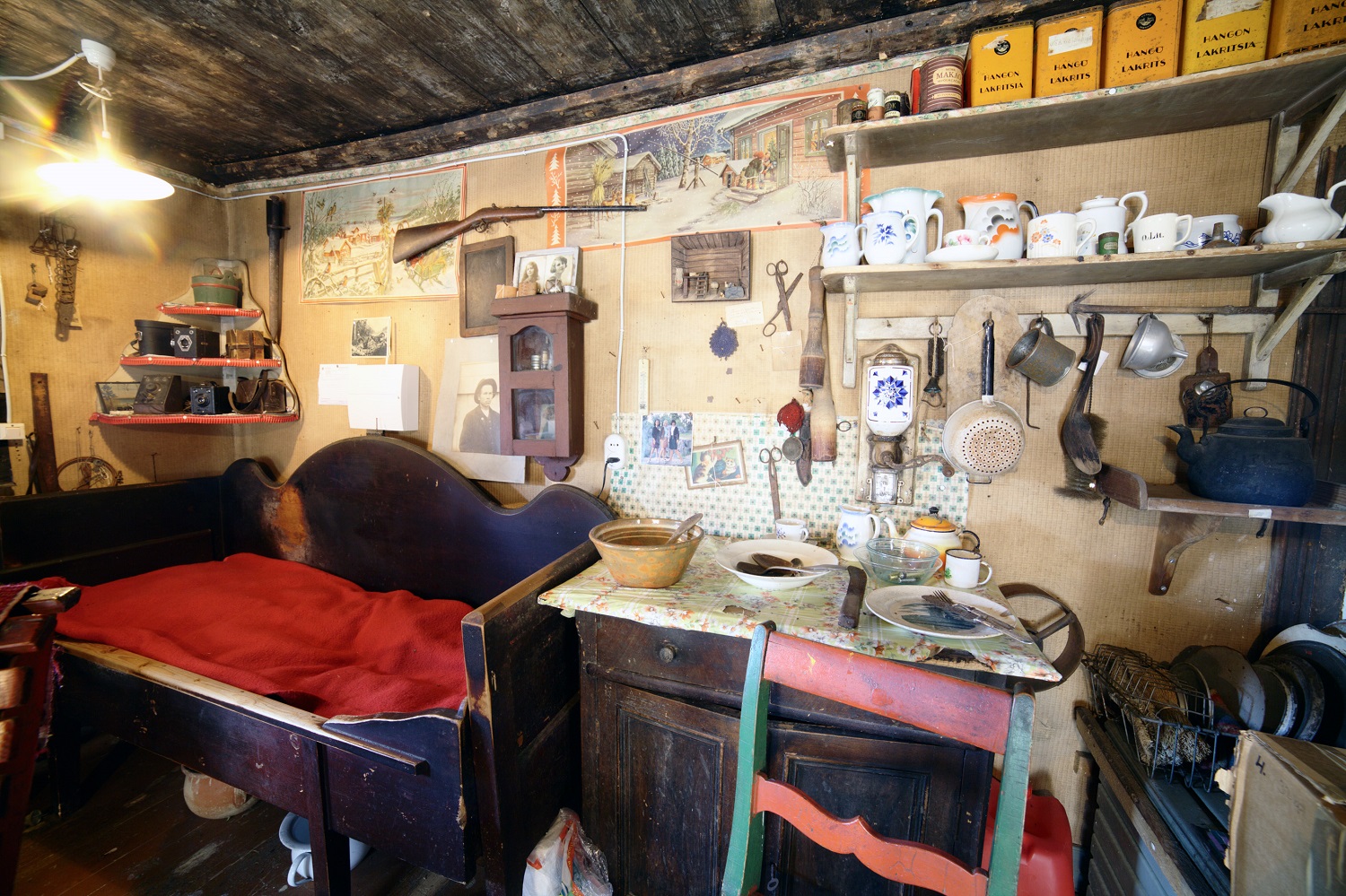
-
Hollola Local Heritage Museum is located in the Hollola parish village in a historic cultural landscape near a medieval church.
The museum area includes the main buildings of Hentilä and Ylä-Kölli, as well as a large number of traditional rural buildings, such as storage buildings, a smithy, a stable, a cowshed and a sauna. The large outdoor area includes 16 buildings in total.
The buildings in the museum area have historical interiors decorated in the style of the era and showcase agricultural and farming objects associated with the original intended use of the buildings. Ylä-Kölli also features textiles from the museum’s collections; these are selected based on a changing theme. In a separate old grain storehouse that was completed in 1855, there are exhibitions in the summertime, as well as a permanent exhibition of local horse equipment.
The museum arranges the Hollola Beer-brewing Competition every year just before Midsummer. A variety of work demonstrations and events are also arranged in the museum area, such as an annual harvest and tradition event in August. The museum is operated by the Hollola Local Heritage Association (Hollolan kotiseutuyhdistys ry).
The Hollola Local Heritage Museum is open in the summertime from June to August and by request at other times.
Tel. 041 440 5450 yhdistys@hollolankotiseutuyhdistys.fi
Rälssintie 6, 16710 Hollola
Go to museum’s website
Go to museum’s mobile guideBuildings at the Hollola Local Heritage Museum.
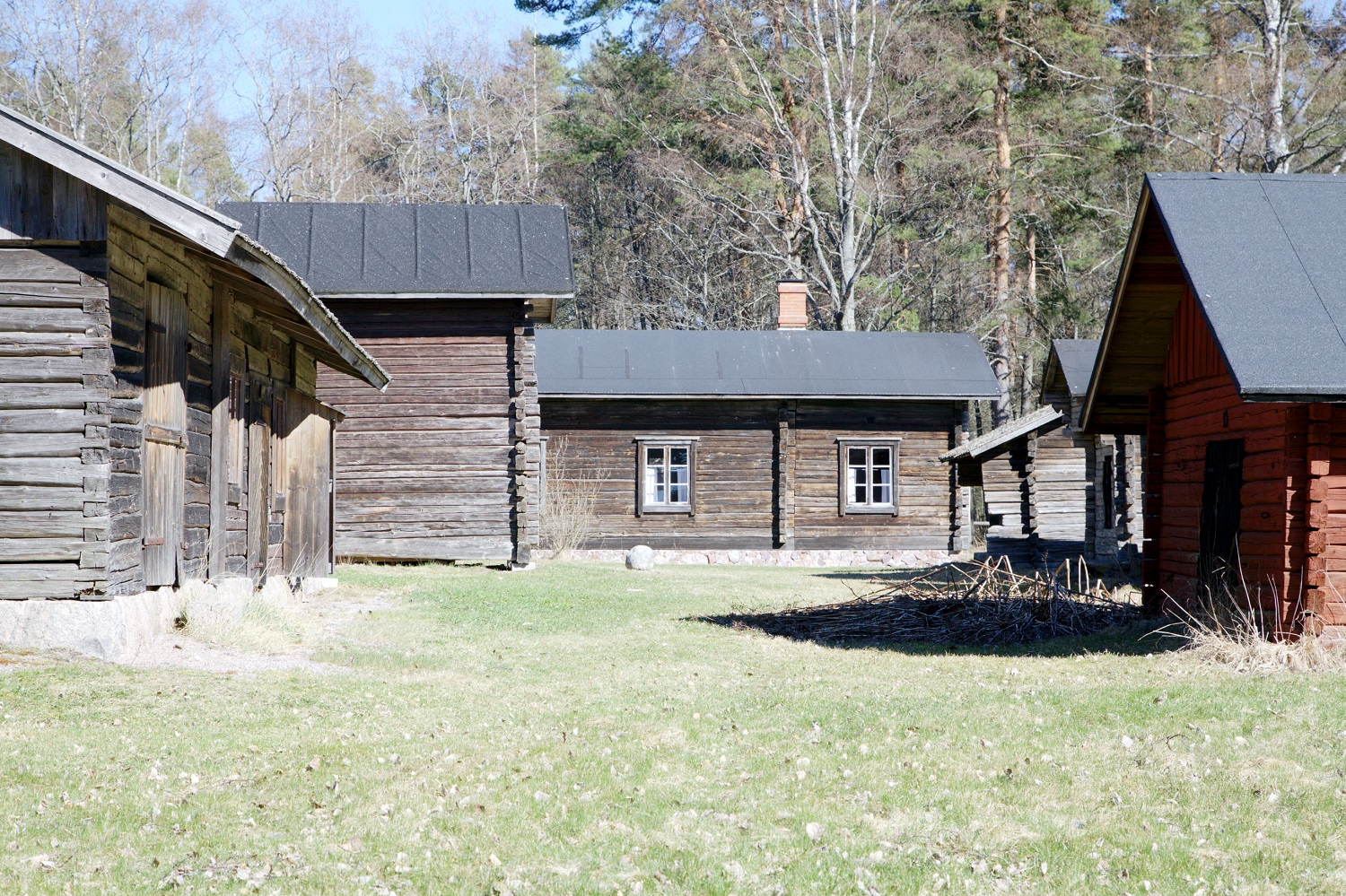
-
The Hämeenkoski Local Heritage Museum (Hämeenkosken kotiseutumuseo) is located along Keskustie road, close to Hämeenkoski Church.
The museum area includes three buildings. A former grain storehouse built in 1856 houses an exhibition on churches in Hämeenkoski and smaller exhibitions on local village shops and schools. The exhibitions also cover the history of linen and farming. The main building of Mustio farm, built in 1836, has been transferred next to the grain storehouse. The building’s interior reflects life in the 19th century. The third building in the area is a two-storey farm building moved to the museum from the village of Hyväneula. The museum is operated by the municipality of Hollola.
The Hämeenkoski Local Heritage Museum is open on Sundays in July.
Tel. 040 557 4402
nea.uusisalo@hollola.fi
Keskustie 36, 16800 Hämeenkoski
Go to museum’s websiteThe grain storehouse housing the Hämeenkoski Local Heritage Museum has been painted white and has a red tiled roof.
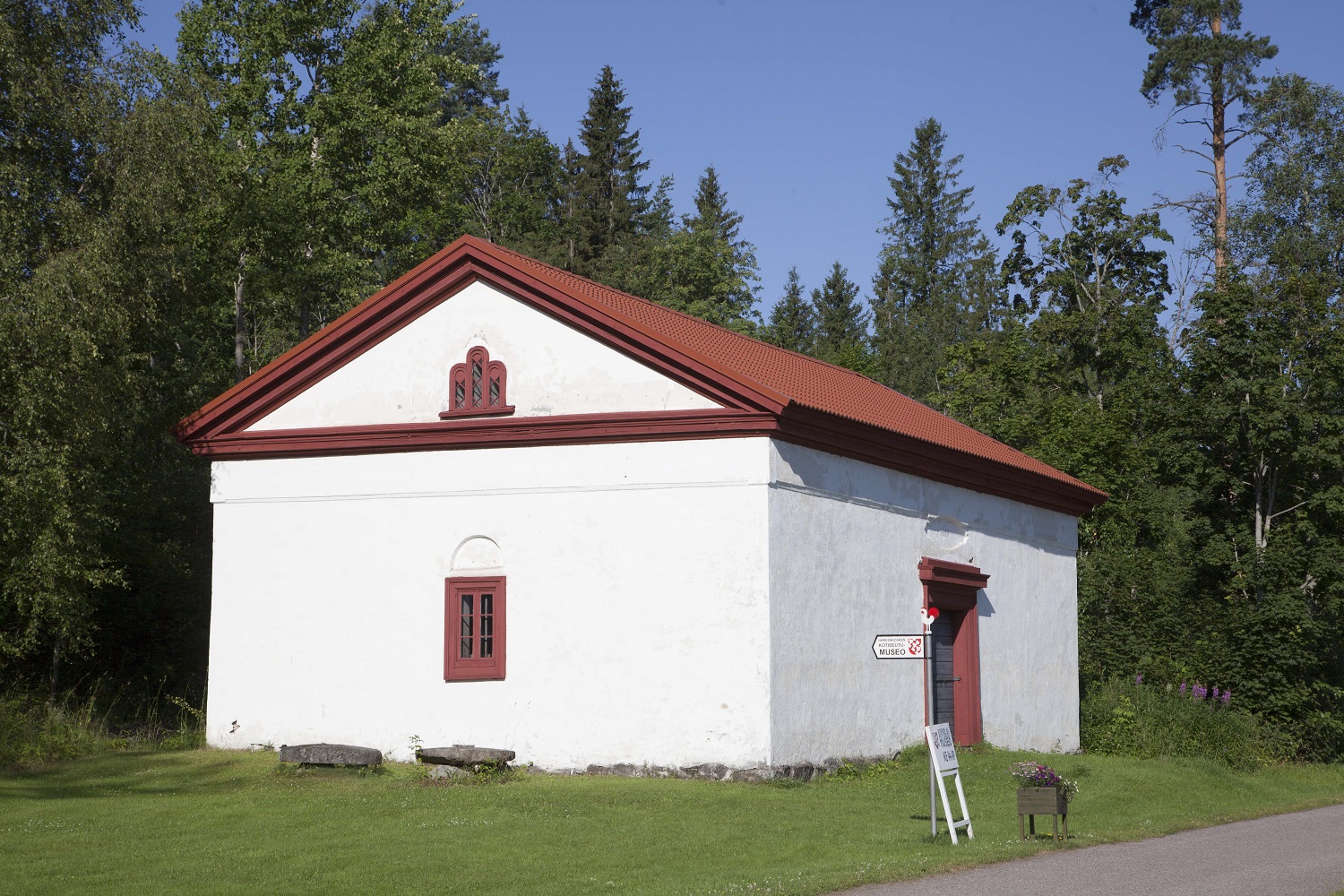
Iitti
-
Located in the Iitti parish village, the purpose of the Iitti Local Heritage Museum (Iitin kotiseutumuseo) is to maintain and promote interest in local history. The museum has plenty to see and experience for anyone interested in traditions and objects from Iitti from the turn of the 19th and 20th centuries.
The museum’s exhibition mainly showcases farming objects, agricultural tools, household appliances and interior decoration from the late 19th and early 20th centuries. There are also renowned joinery products from Iitti and objects linked to the Iitti Church.
The museum’s exhibition was renewed in 2020. The exhibition covers prehistory and history of the parish. It describes the development of livelihoods from hunting and fishing in the Kymijoki River area to industry, the people of the parish village, joinery objects and textiles, as well as equestrian traditions and the church.
The Iitti Local Heritage Museum is located in a former grain storehouse dating back to 1830. It is an Empire-style building with a hipped roof. In addition to the grain storehouse, the museum hill houses a farm building from the 1750s and a drying barn. The museum hill is surrounded by the beautiful rural scenery of the Iitti parish village. The museum is operated by the municipality of Iitti.
The Iitti Local Heritage Museum is open in the summertime.
Tel. 040 773 6743 (cafeteria), 040 483 3800 (library)
Museotie 8, 47520 Iitti
Go to museum’s website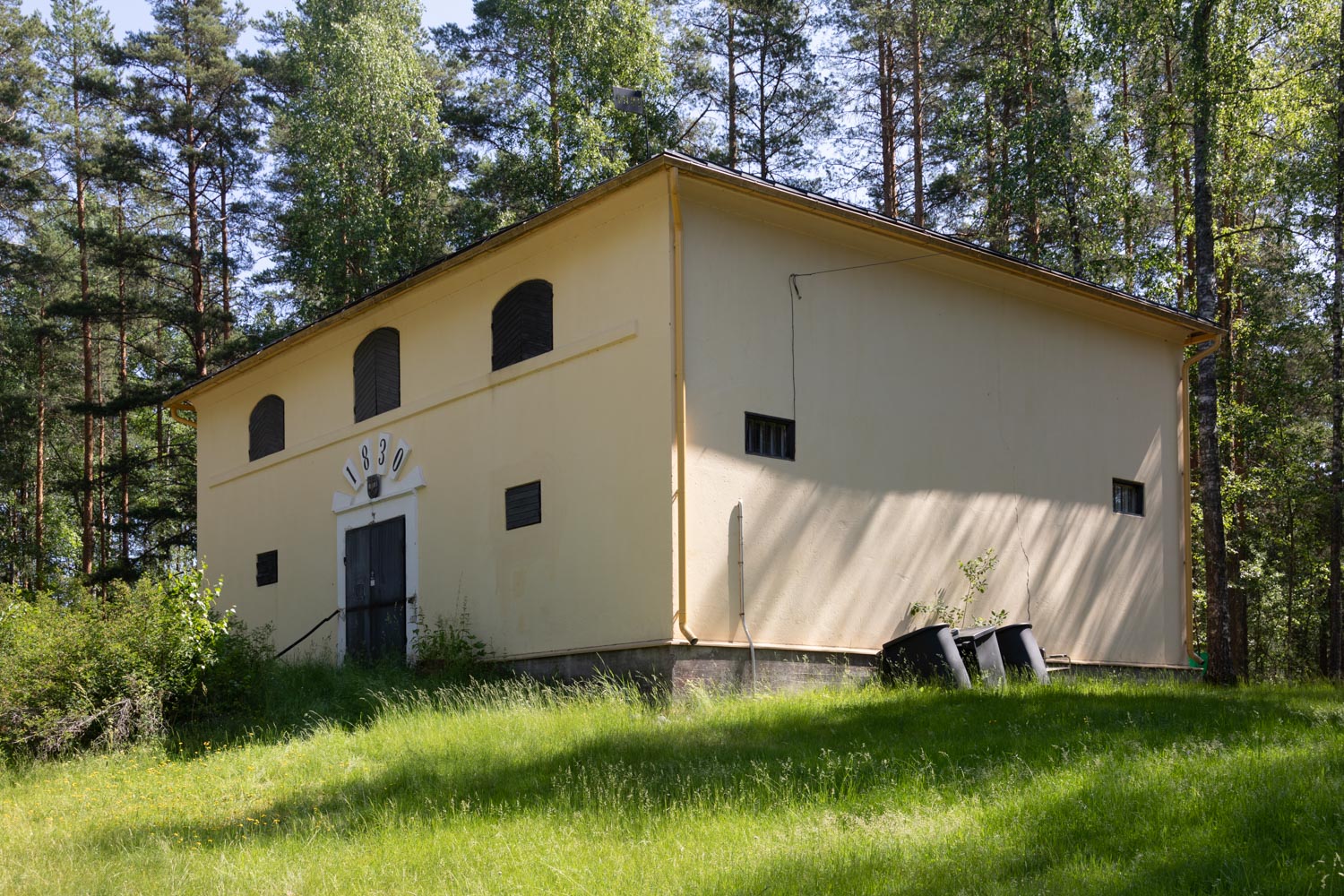
-
Karrala Farm Museum is located in the village of Koliseva in Iitti. The main building dates back to the late 18th century, but the history of the farm extends all the way to the 16th century. The building has been decorated in a rustic style and features some objects from the collections of the Iitti Local Heritage Museum.
Karrala has a long history: in 1543, the prosperous Karrala farm was cultivated by three families. In the 18th century, the original farm was split into six Karrala farms that worked in cooperation at the time. During the land reform in 1848, the lands were parcelled out and each farm was appointed a master. The last master of Karrala – the patriarch of Koliseva – ruled the house until 1977. The confirmed bachelor, who handled his finances with care, made the farm very prosperous. After the death of the patriarch, his heirs donated the farm’s main building to the municipality of Iitti.
Karrala is operated by the Iitti Local Heritage Association (Iitin kotiseutuyhdistys ry), which has mostly focused on the restoration of the house and its yard area to maintain a piece of the old farming traditions of Iitti to the posterity. Karrala Farm Museum is open during events and by request.
Tel. 045 232 6242, 050 352 4959
Myllymäentie 32, 47310 Haapa-Kimola
Go to museum’s websiteKarrala’s red main building.
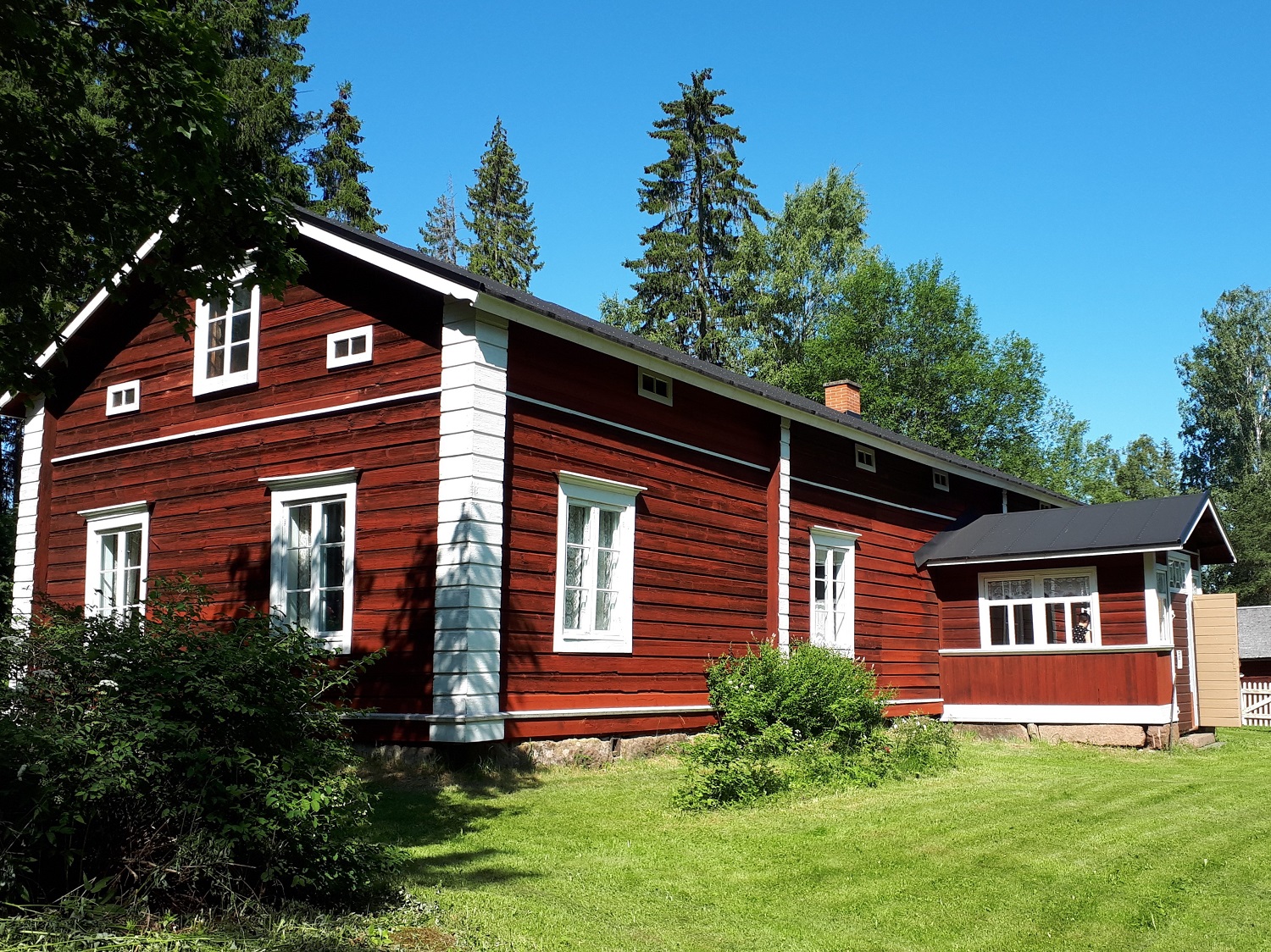
Kärkölä
-
The Kärkölä Local Heritage Museum is located close to the Kärkölä parish village in the grounds of the English-style Huovila Park.
Restored in the style of the early 20th century, the idyllic ponds and paths of the scenic park of Huovila Manor, the vegetation in the area and the quaint museum area with its log buildings form a beautiful whole.
The museum area comprises 14 buildings, most of which have been moved to the site from other parts of Kärkölä. The oldest building in the museum is the main building, Maijala House, which dates back to the 18th century. The interior of the house and the collection of objects within offer visitors an idea of what life was like in Kärkölä in the 19th century. The museum area includes a chimneyless sauna, a sweep well and more traditional Finnish farm buildings and storehouses. In addition to the permanent exhibitions, there are small annual themed exhibitions.
Old carpenter’s and shoemaker’s tools as well as horse-drawn carriages and working machines are on display in an old general store’s warehouse. The upstairs space is reserved for exhibitions and some small-scale music or theatrical performances in the summertime.
Events, such as Kärkölä Day and local Beer-Brewing Championships, are arranged at the museum in the summertime. In the summer there is also a café in the old storehouse. The museum is operated by the Kärkölä Society (Kärkölä-seura ry).
The Kärkölä Local Heritage Museum, Huovila Park and the café are open from Wednesday to Sunday in the summertime, from the beginning of June to mid-August.
Tel. 040 726 8540
ilkka.kari@phnet.fi
Museotie 17, 16610 Kärkölä
Go to museum’s websiteA cottage decorated in the old style at the Kärkölä Local Heritage Museum.
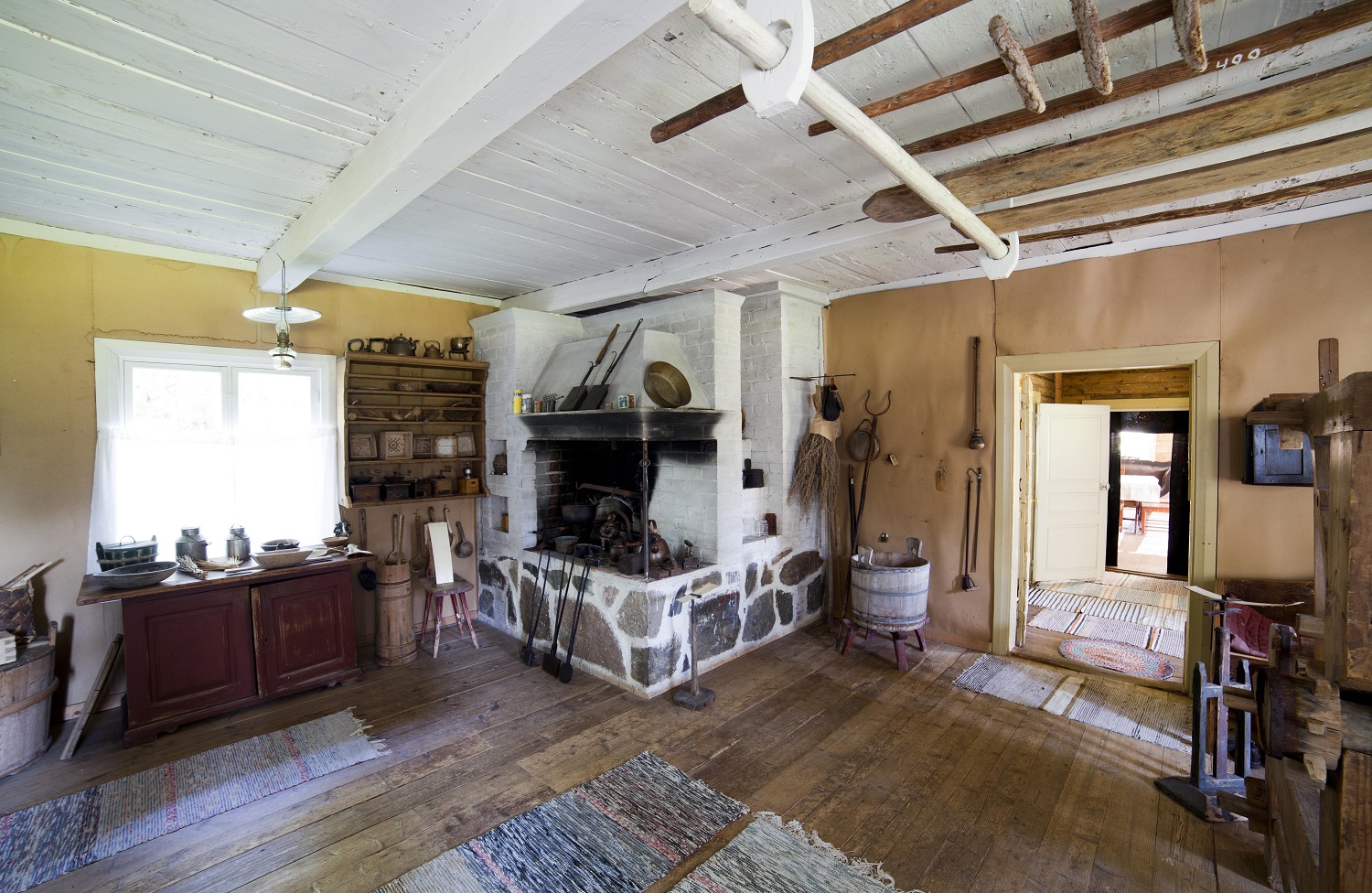
Lahti
-
Apulandia is located in the former garrison area of Hennala in Lahti, in a prestigious red brick building that was originally built as the house of the brigade commander. Apulandia houses the museum of the famous Finnish rock band Apulanta and a café. Apulandia is also the band’s home base, including offices, the band’s practice space and a studio.
The museum offers a trip to the past of Apulanta, a band hailing from Heinola, a city not far from Lahti. The exhibition features rare collectibles, stories, videos, photos, posters, musical instruments, gold records, stage props, clothes and memories from the career of Apulanta. The exhibition is constantly supplemented with new objects and stories.
The museum also includes the band’s original practice space that was located in Heinola: the walls were moved to the museum when the original building was demolished. The band still uses the practice space, and you may see the band members roam the hallways of the museum. Events ranging from trade fairs to jumble sales are arranged in the museum’s yard area.
Apulandia is open during the summer season on weekends and at other times by request.
apulantaofficial@gmail.com
Helsingintie 199, 15700 Lahti
Go to museum’s website
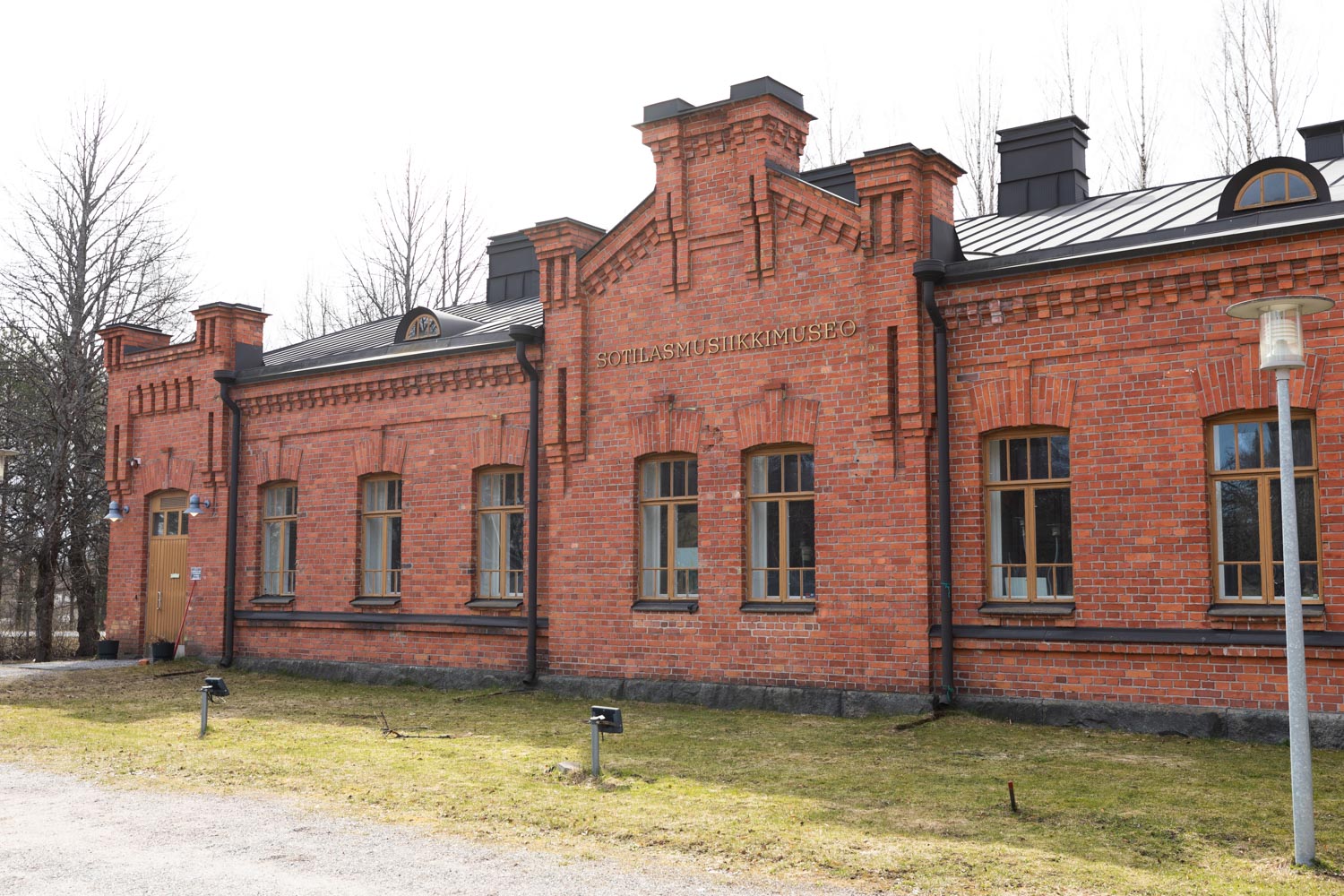
-
The Museum of Military Medicine is located in the former garrison area of Hennala in Lahti, right next to Apulandia. The museum occupies one of the garrison’s prestigious red brick buildings. This one was originally built as the headquarters of the Russian Army in 1913.
The several exhibitions of the Museum of Military Medicine present medical care during the Second World War on the Finnish fronts and military medical care of the Finnish Defence Forces during the peacetime. In addition to medical care and veterinary medicine, the exhibition introduces visitors to the fates of men from Päijät-Häme during the war and objects made by soldiers on the front. Recent searches for the fallen at battle sites that are currently within the Russian territory are also covered. The museum includes exhibitions of the history of the Hennala garrison area and the events of the Finnish Civil War (1917–1918) in Lahti, and at a prison camp that was located in the garrison area at the time.
The museum organises lectures and shows films related to the history of Hennala. The museum is operated by the Finnish Military Museum Foundation (Suomen Sotilasmuseosäätiö).
The Museum of Military Medicine is open in the summertime, from June to early September, on Saturdays and Sundays from noon to 4 pm.
Tel. 050 309 2232
hennalaan(at)phnet.fi
Helsingintie 199 B, 15700 Lahti
Go to museum’s website
Go to virtual museum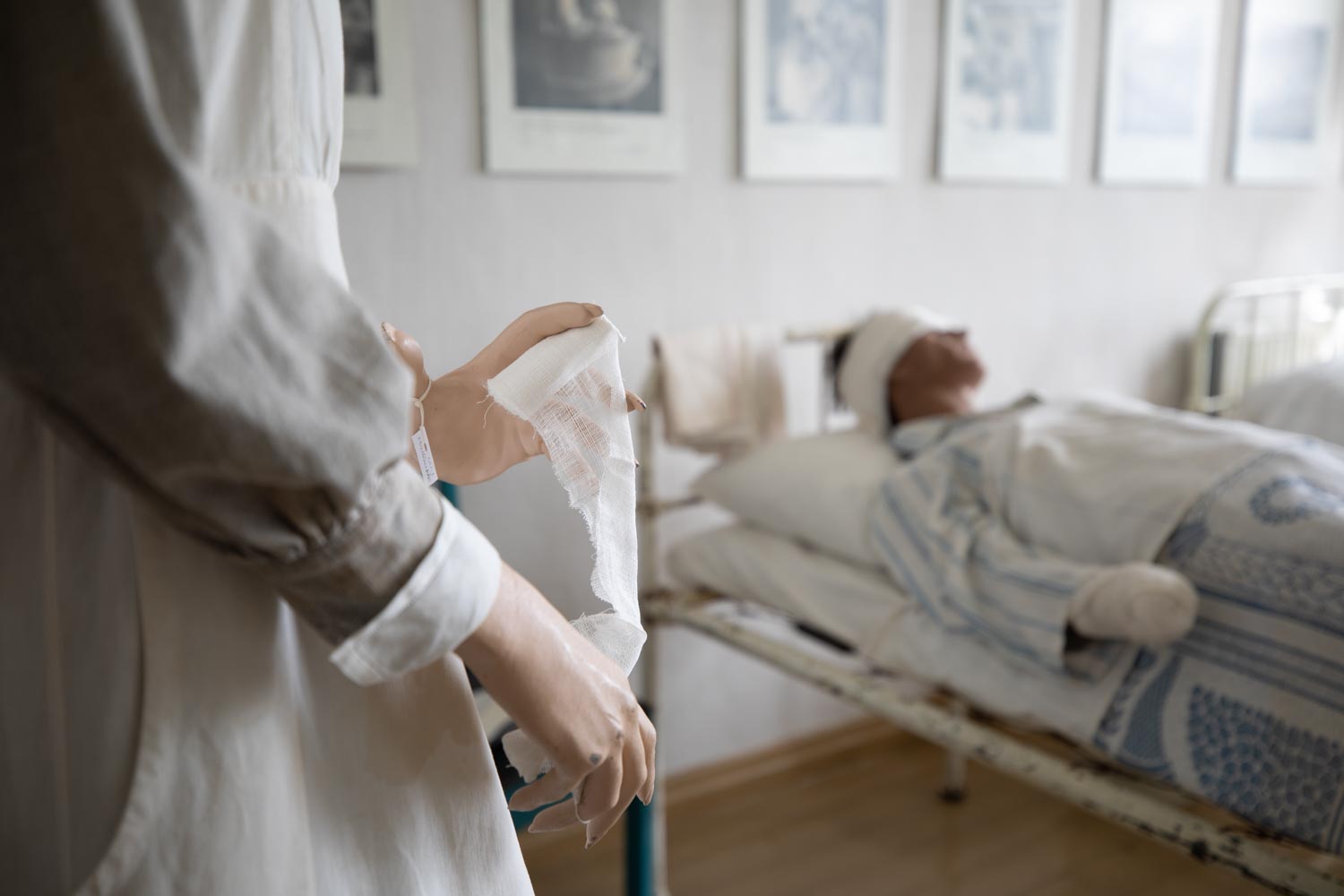
-
The Finnish Canoeing Museum (Suomen Melontamuseo) is located in the small island of Kahvisaari in front of Niemi marina in Lahti. Kahvisaari Island was originally the summer resort of the founder of Lahden Polttimo (currently Viking Malt Ltd.), Ferdinand Frigrén. The island and the buildings there are culturally and historically valuable. Nowadays, Kahvisaari island is home to a canoeing and kayaking centre operated by a local canoeing association, Vesisamoilijat ry. They established the Finnish Canoeing Museum in 2008.
The museum’s exhibition showcases the history of canoeing in Finland – the development of the sport, the technique and the equipment. The museum aims to serve as the collective memory of Finnish canoeing. The compact exhibition features objects associated with both recreational and competitive canoeing, i.e. canoes, kayaks and related objects, photographs and literature. The jewel of the collection is a kayak with which Finnish kayaker Sylvi Saimo won gold at the Helsinki Olympic Games in 1952. The museum is operated by Vesisamoilijat ry.
The Finnish Canoeing Museum is open in the summertime, Monday to Friday from 9 am to 3 pm and on Tuesdays and Thursdays from 5 pm to 8 pm.
Tel. 044 581 7681, 0400 491 452
melontamuseo@vesisamoilijat.fi
Kipparinkuja, 15140 Lahti
Go to museum’s websiteCanoes and kayaks at the exhibition of the Finnish Canoeing Museum.
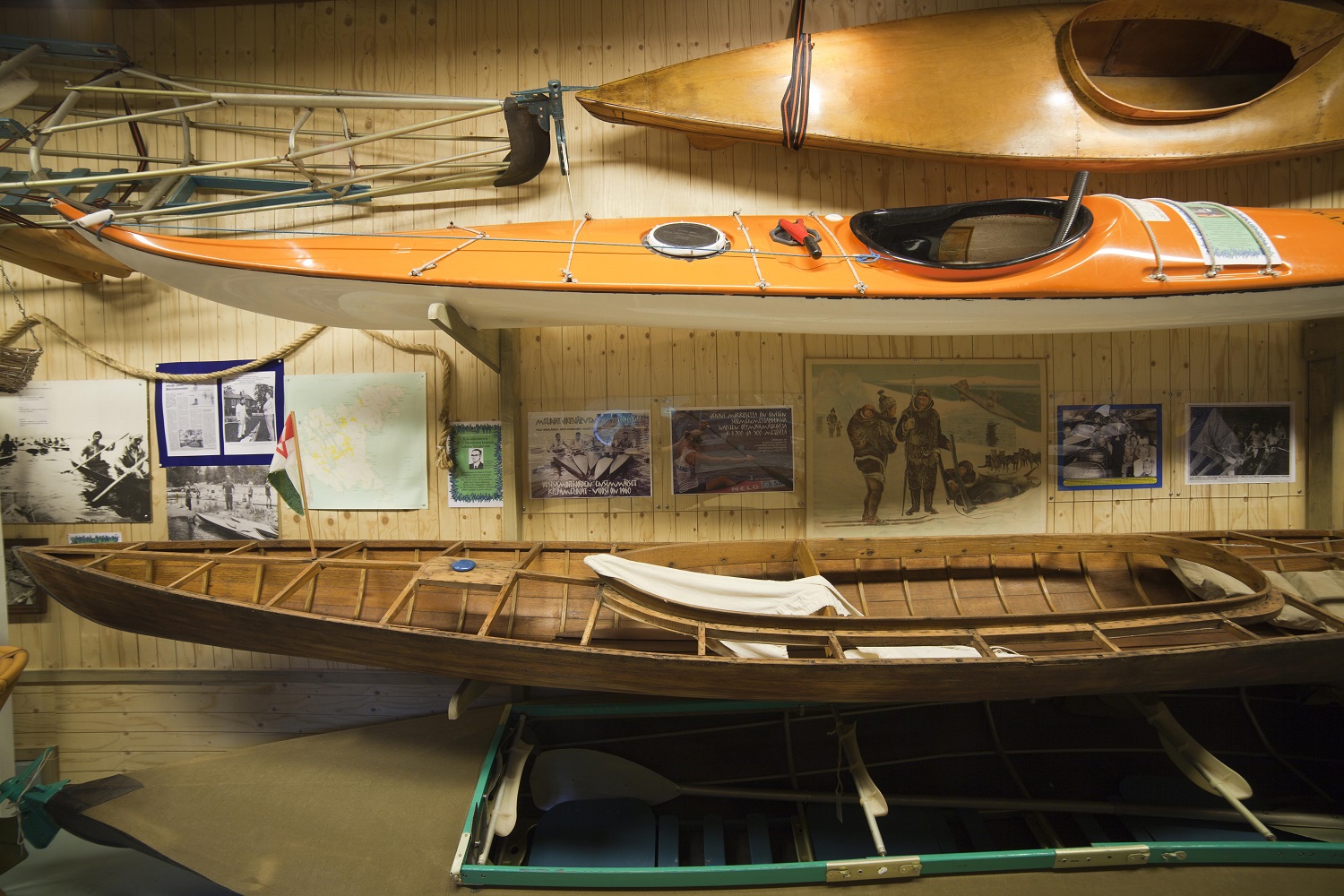
-
The Finnish Motorcycle Museum is located at Niemi marina on the shore of Lake Vesijärvi. The museum is located in an old drying plant from 1959 that has been renovated and expanded for museum use.
The Finnish Motorcycle Museum extensively presents the history of Finnish motorcycling from the beginning of the 20th century to the 1980s. The museum tells stories about a wide range of restored rare motorcycles from Finland and the rest of the world, as well as more traditional everyday motorcycles and mopeds. In addition to more than a hundred motorcycles, the museum displays other objects, such as old scale models and motorcycle accessories.
The museum arranges annual exhibitions with varying themes and plenty of events ranging from concerts to jumble sales and rallies during the summertime. There is a restaurant in the museum. The museum and the restaurant are open during the summer season, as well as by request at other times. You can visit the museum with a Museum Card.
Tel. 0400 712 310
lahti@moottoripyoramuseo.fi
Veistämönkatu 1, 15140 Lahti
Go to museum’s websiteSign of The Finnish Motorcycle Museum on the brick wall of the museum.
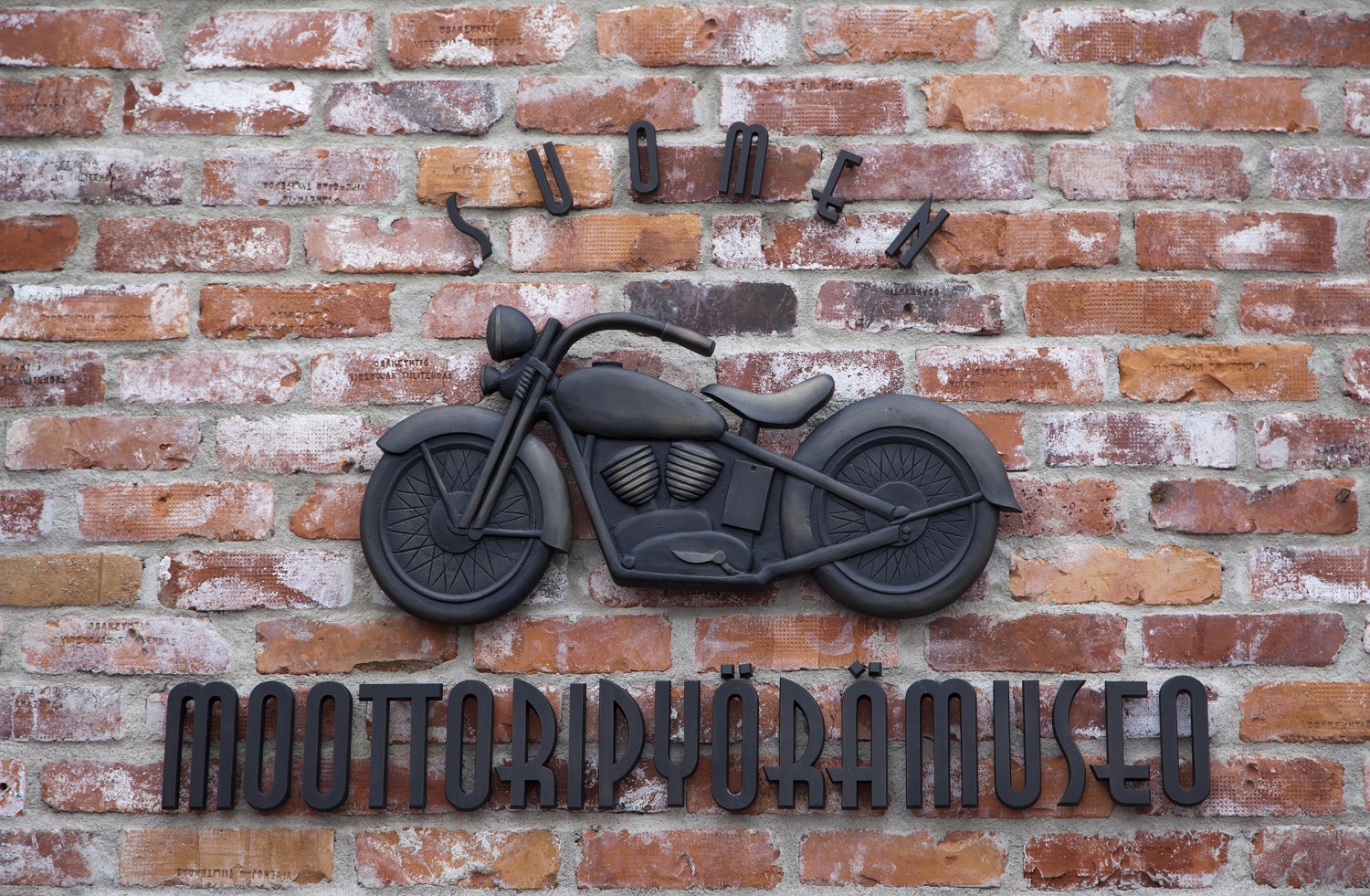
Orimattila
-
The Artjärvi Local Heritage Museum is located in Artjärvi, Orimattila, next to Ratula Manor. The Artjärvi Local Heritage Museum is the oldest local heritage museum in the Päijät-Häme region. In 1923, the owners of Ratula Manor at the time, Gustaf Alexander and Märtha Rotkirch, donated the plot of land close to the manor to the museum.
The museum area includes buildings from the 18th and 19th centuries. The main building dates back to 1757, and it was moved to the museum from the Sääksjärvi village in Iitti. The fretwork in the doors and window frames of the building is extremely intricate. In addition to traditional farm buildings, the area has a cottage that was used as the study of the lord of the manor. Local artist Martti Koivisto has made frescoes in the building. The cottage is now used to showcase school-related objects. The area also includes a beautiful pavilion made from shingles that one of the owners of the manor, Alexander Armfelt, built as a chapel for his wife Aline in 1844.
Museum collections are also on display in a former grain storehouse near the Artjärvi Church, which is not part of the museum area. The storehouse also includes extensive local archives that are available to researchers. The building itself dates back to 1825. The museum is operated by the Artjärvi Heritage Association (Artjärven kotiseutuyhdistys ry).
Tel. 040 505 5869
artjarven.kotiseutuyhdistys@gmail.com
Museum area: Ratulantie 312, 16200 ArtjärviGrain storehouse: Kirkkotie 36, 16200 Artjärvi
Go to museum’s websiteThe old grain storehouse housing an exhibition of the Artjärvi Local Heritage Museum.
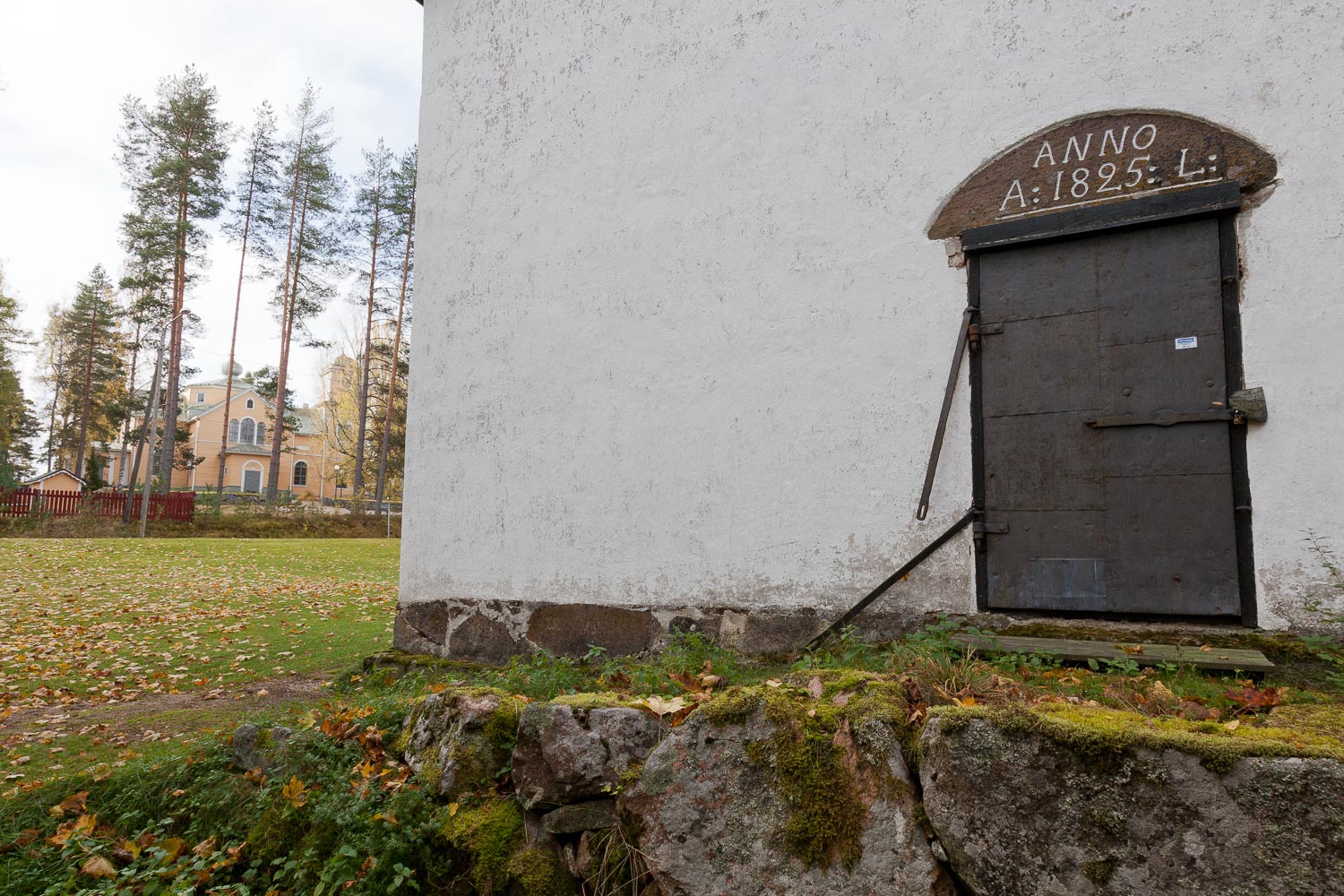
-
The Orimattila Local Heritage Museum is a charming farm milieu in downtown Orimattila, close to the Orimattila Church. The museum has been open to the general public since 1952.
The nine buildings in the museum area, most of which date back to the 19th century, feature objects related to the everyday life of farms in the 19th and early 20th centuries. In addition to a main building and farm buildings, the area includes a village smithy and a chimneyless hut from the 18th century where you can explore hunting and fishing equipment and shoemaker’s tools. A stone cutter’s cottage from the village of Keituri is a reminder that stone cutting used to be a very common source of livelihood in the region. Mills have also been important for the area, because of Porvoonjoki River that flows through Orimattila. That is why there is a water mill from Heinämaa in the yard of the museum. The museum is maintained by the city of Orimattila.
The Orimattila Local Heritage Museum is open in the summertime, from June to August.
Tel. 040 569 6672, 044 781 3567
Pappilantie 4, 16300 Orimattila
Go to museum’s websiteA detail from the fretwork in a cabinet at the Orimattila Local Heritage Museum.
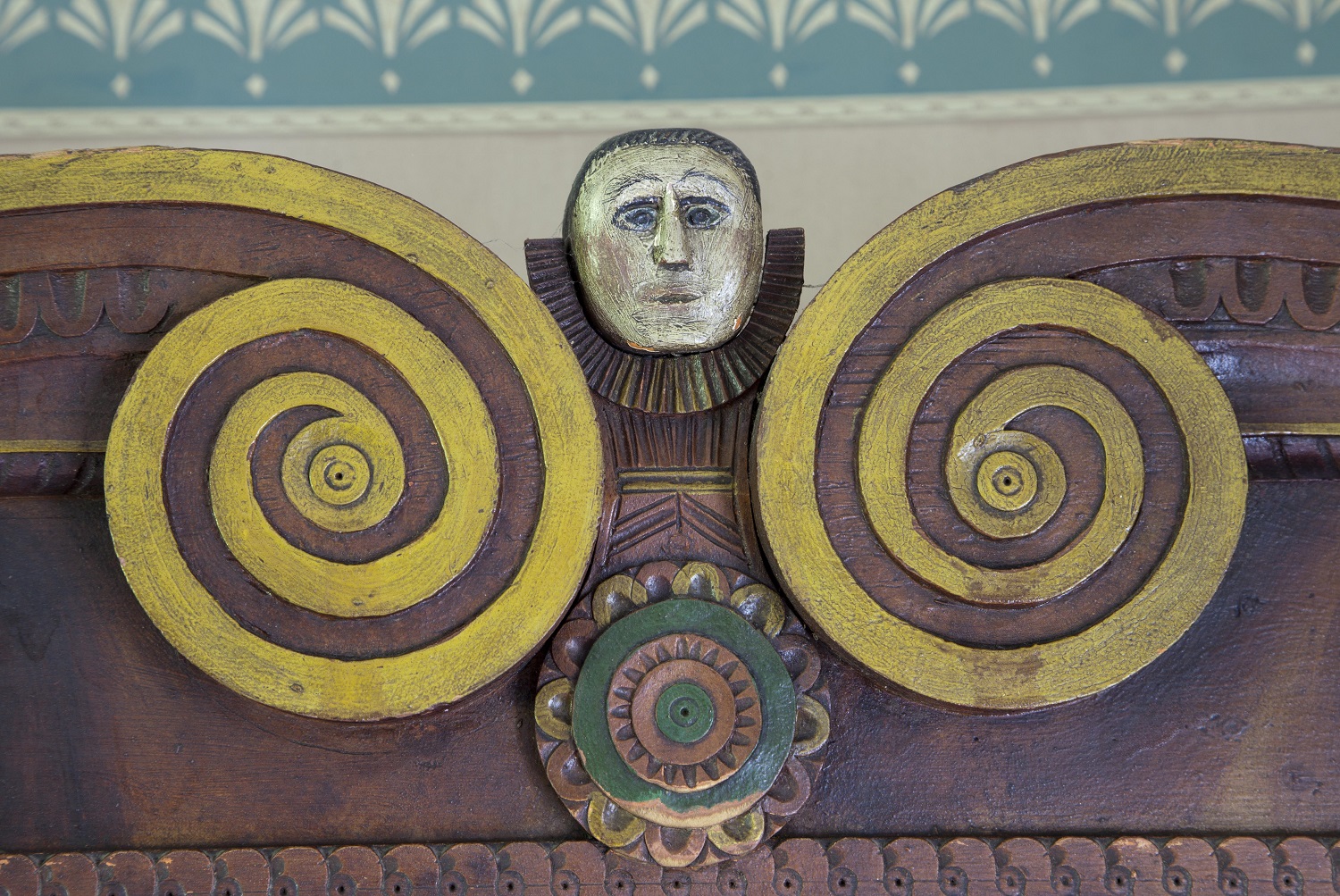
-
Orimattila Bottle Museum is located in downtown Orimattila.
Orimattila Bottle Museum collects, stores and exhibits Finnish glassware and beverage history. The museum’s present collection contains more than 1,500 items from the 1600s to the 1900s. In addition to a bottle collection, the museum has tobacco room from the era when Finland was a Grand Duchy of Russia (1809–1917) with unique tobacco packages and posters, and an apothecary corner from the late 19th century. The private Orimattila Bottle Museum is open once a year, on May Day (May 1).
Tel. 050 518 8061
Puistotie 12 B, 16300 Orimattila
Go to museum’s websiteBottles and glassware at the exhibition of the Orimattila Bottle Museum.
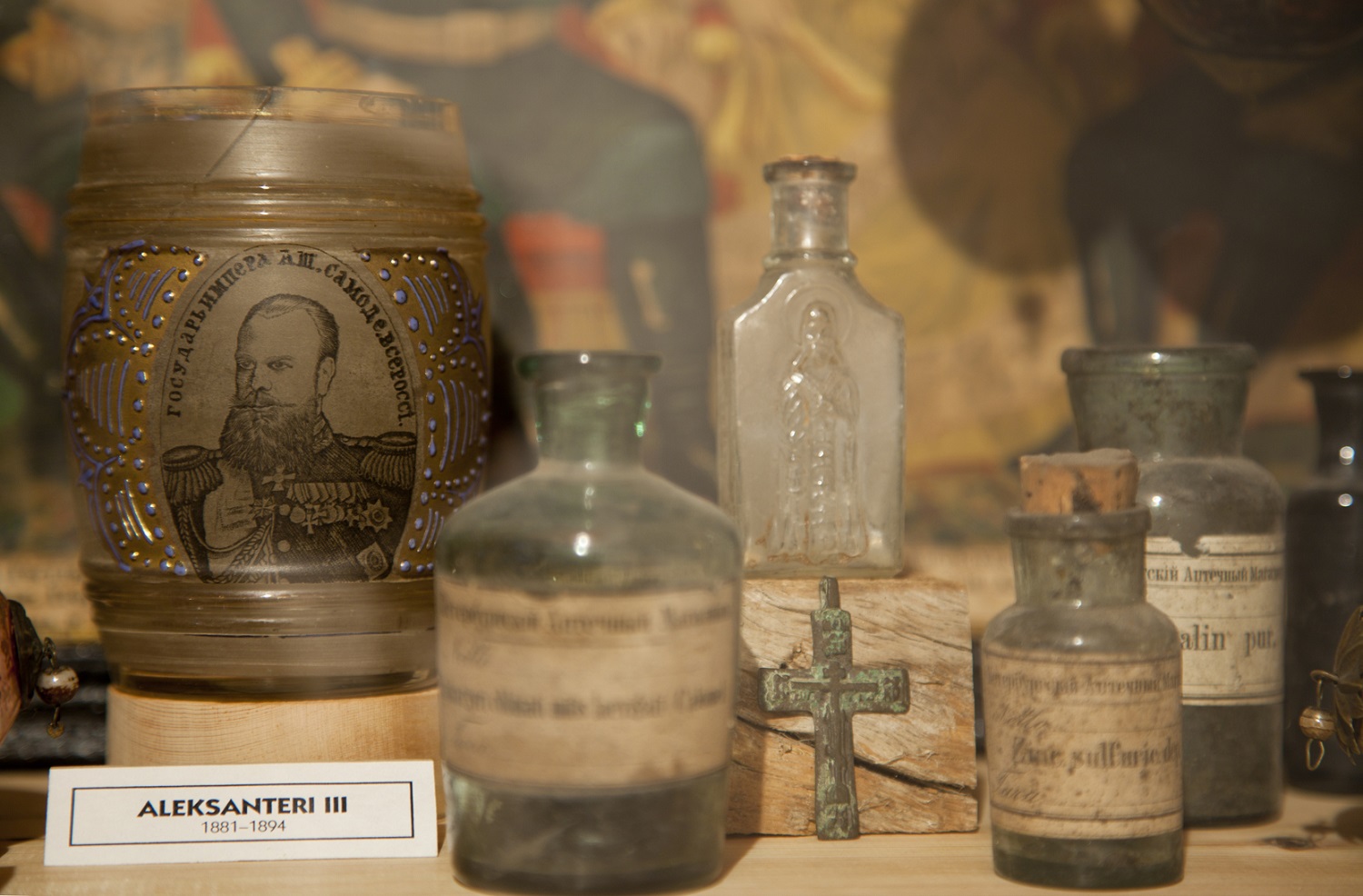
-
Orimattila Art Museum is located in downtown Orimattila, in a former red brick textile industry building called Kulttuuritalo. The art collections in Orimattila were established in 1978, and the museum has been operating at its current location, on the second floor of Kulttuuritalo, since 1993.
The art museum’s exhibition includes the collections of Art Foundation Ilmari and Toini Wall-Hakala, the collections of Pentti Papinaho and the exhibition Orimattila’s Erkkos, which presents the lives of the Erkko brothers, poet/author J. H. Erkko, journalist/politician Eero Erkko and poet/author Rudolf Elias Erkko.
A collection of Finnish and foreign art from the 19th and 20th centuries, collected by businessman Ilmari Wall-Hakala (1904–1973), consists of more than 170 paintings and drawings, some 60 sculptures and antique furniture. The collection includes works by some of the most famous Finnish artists, such as Akseli Gallén-Kallela, Albert Edelfelt, Pekka Halonen, Eero Järnefelt, Helene Schjerfbeck, Maria Wiik, as well as Ferdinand and Magnus von Wright. Wall-Hakala’s father was born in Orimattila, which is why he ordered the foundation to have the art collection on display in Orimattila.
The collection of sculptor Pentti Papinaho (1926–1992) comprises the artist’s works from three decades: portraits, abstract sculptures, reliefs, medals and photographs. Papinaho created numerous public works that are on display all around Finland.
The museum arranges several special themed exhibitions each year, as well as public events ranging from concerts to yoga and children’s events to lectures. The museum is maintained by the city of Orimattila.
The Orimattila Art Museum is open from 8 June to 8 August Tuesdays to Sundays from noon to 6 pm. From 10 August onwards, the museum is open Tuesdays and Wednesdays from noon to 7 pm, Thursdays and Fridays from noon to 4 pm and Saturdays and Sundays from 11 am to 3 pm. You can visit the museum with a Museum Card.
Tel. 044 781 3567
Lahdentie 65, 16300 Orimattila
Go to museum’s website
Go to museum’s mobile guideA close-up of the side profile of a sculpture of the head of a girl in the Orimattila Art Museum, with paintings in the background.
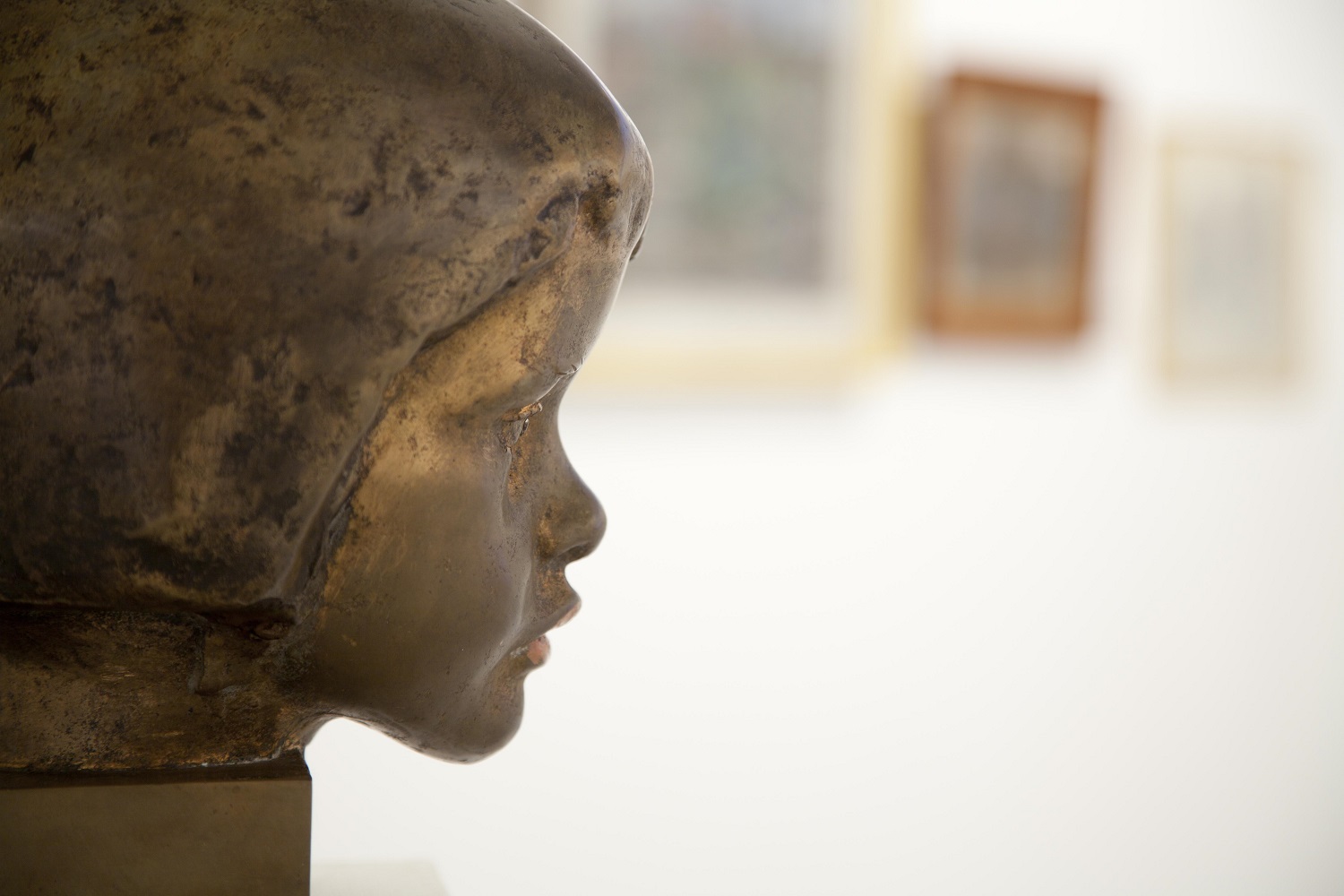
Padasjoki
-
The former home of artist Enni Id, a charming small red house, is located in the Seitniemi village in Padasjoki, along Kellosalmentie road.
The home of outsider artist Enni Id (1904–1992) in Seitniemi is a work of art full of colour. The cottage is painted from floor to ceiling with the artist’s favourite subjects: ornamental flowers and plants, as well as cats. Enni Id also made oil colour paintings of angels, devils and the Cudgel War. The general public became aware of her work after an exhibition of naïve art at Kunsthalle Helsinki in 1973.
Events and workshops are organised in the artist’s home in the summertime. There is also a café. Enni Id’s life’s work, the artist’s home and its yard are maintained and nurtured by the Kellosalmi-Seitniemi-Virmaila village association.
Enni Id’s Home Museum and café are open on Sundays from mid-June to mid-August.
Tel. 040 595 3445
piipa.rinne@gmail.com
Kellosalmentie 579, 17500 Padasjoki
Go to museum’s websiteA brightly painted and decorated room at the Enni Id’s Home Museum.
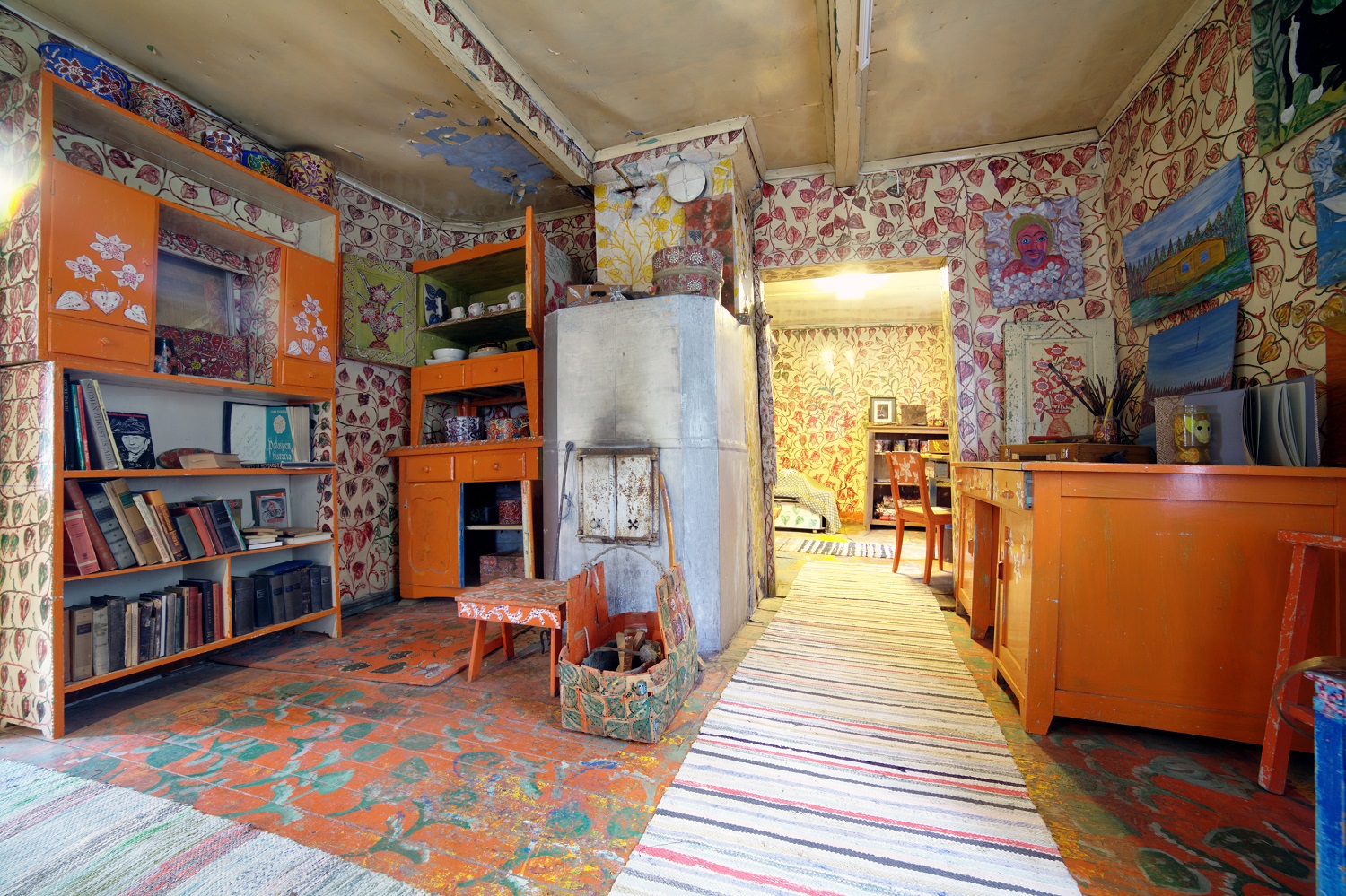
-
The Padasjoki Museum of Agriculture is located in the Padasjoki parish village, in a former grain storehouse along Kuusikuja road. The storehouse was built in 1850, and it is located in a historic landscape next to a larch alley leading to Saksala Manor. The building has housed the museum since 1956.
The museum displays objects from different parts of Padasjoki, including items made by local craftsmen, hunting and fishing equipment, and school-related objects. The museum’s exhibitions also include traditional objects associated with agriculture, animal husbandry and cooking. Represented professions include tailor, shoemaker, carpenter and caster.
Events are arranged in the summertime in the museum’s yard area, such as a local fair in July and a harvest fair in August. The museum’s small café is open in the summertime in accordance with the museum’s opening hours. The museum is operated by the Padasjoki Society (Padasjoki-Seura ry).
The Padasjoki Museum of Agriculture is open on Sundays in the summertime from noon to 3 pm.
Tel. 040 740 0020
Kuusikuja, 17500 Padasjoki
Go to museum’s websiteFishing-related objects at the exhibition of the Padasjoki Museum of Agriculture.
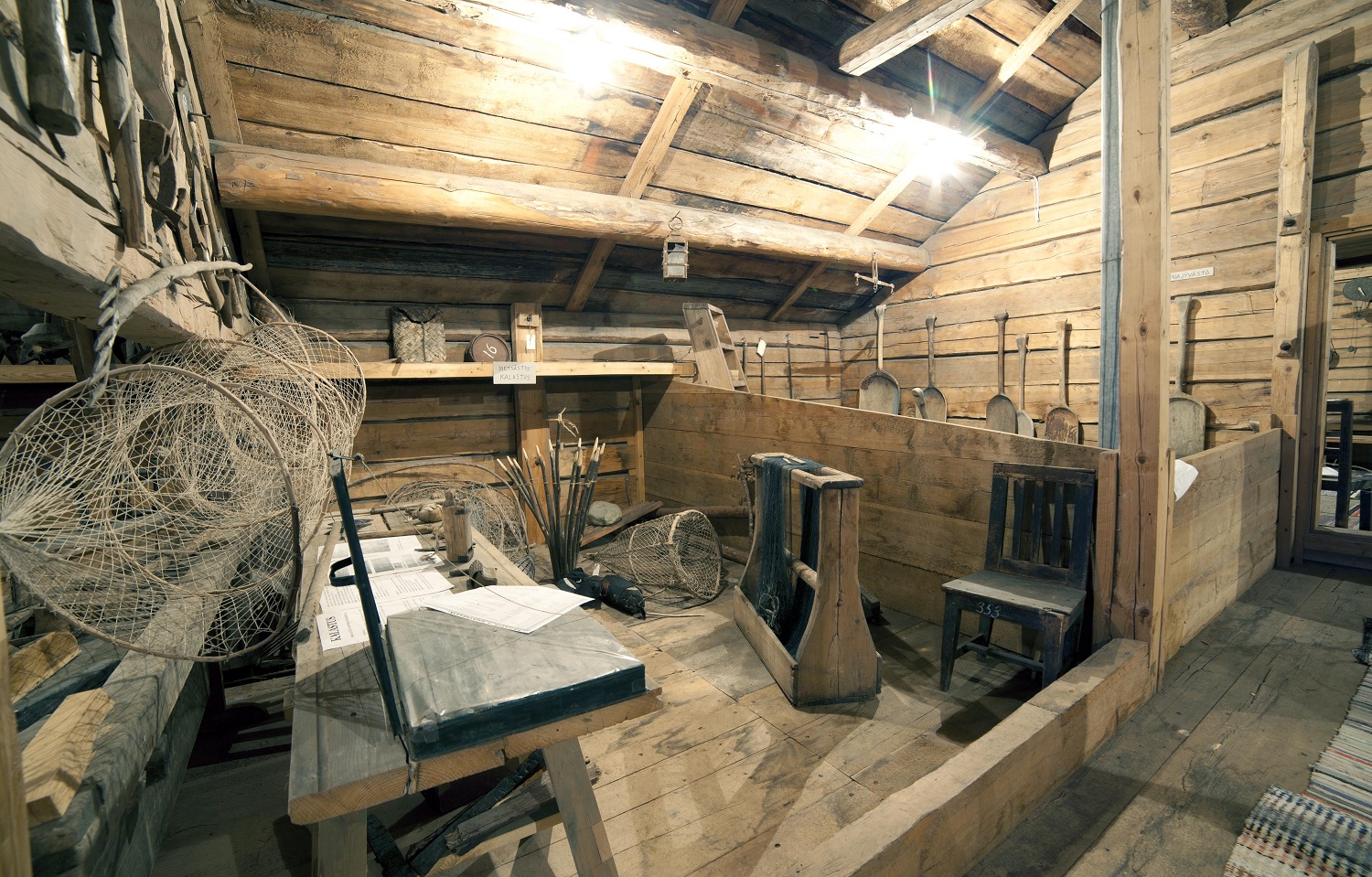
-
The Palsa Mill Museum (Palsan myllymuseo) is located in the Vesijako village in Padasjoki. Vesijako is one of the oldest villages in Padasjoki: it was first mentioned in documents in 1464.
Since the 18th century, the village mill has been in Palsanoja River, which flows from Vesijako Lake to Parlammi Lake. A water-driven sawmill was built in the 1920s. A 15-metre wheat tower was built in 1937 when the mill was converted to grind wheat. The history of the mill also involves an exciting story about Juhani Aataminpoika or Kerpeikkari, Finland’s first serial killer, who was captured at the Palsa Mill in 1849.
Nowadays, you can explore the history of the mill and the sawmill at the Palsa Mill in the summertime. There are also a café and a summer shop in the mill. The Palsa Mill Museum is a private museum.
Tel. 03 557 7073, 040 062 2072
helsinki@kapteenska.fi
Vesijaonraitti 562, 17630 Vesijako
Go to museum’s websiteEquipment at the Palsa Mill Museum.
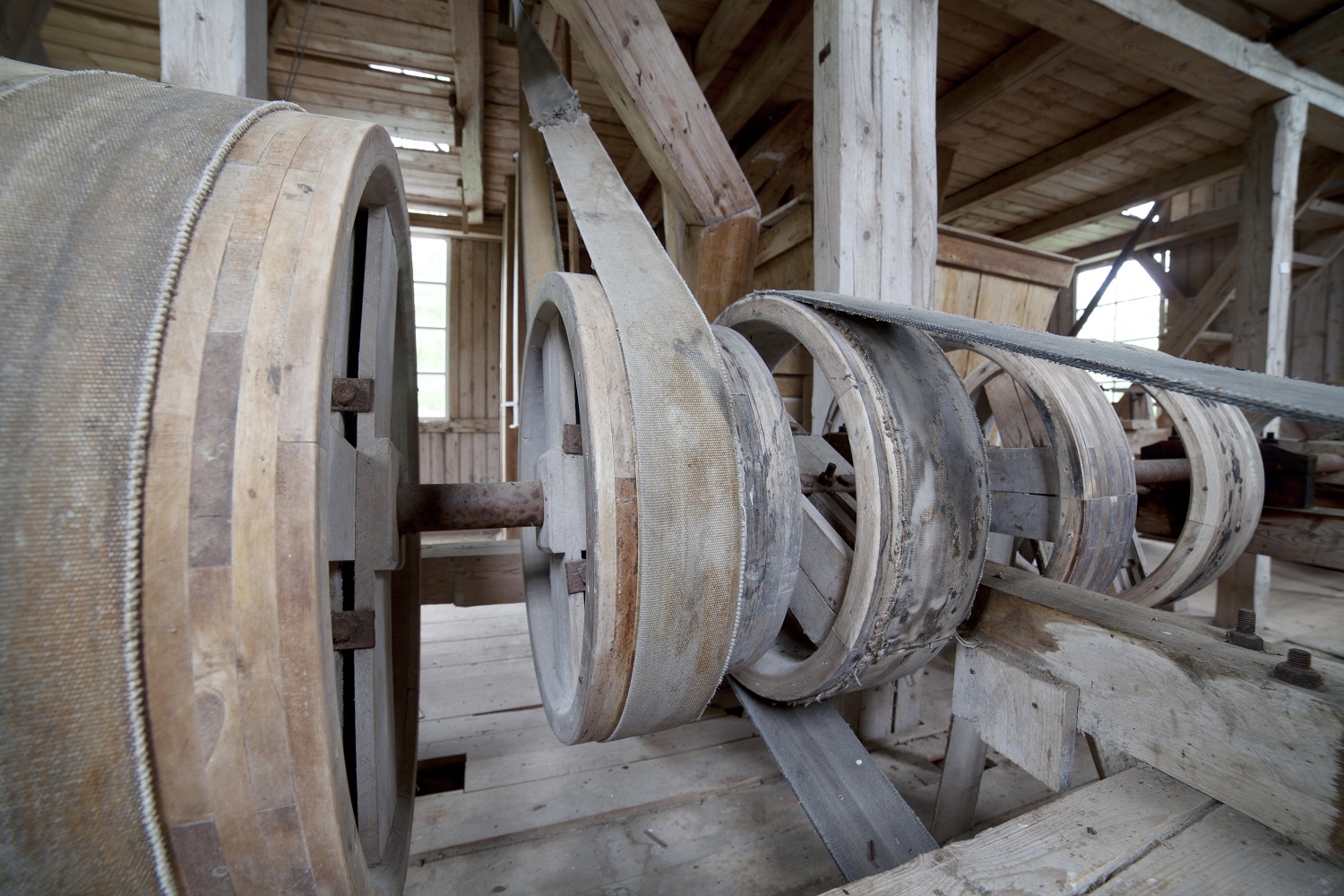
-
Sepänmäki Museum, or the “Village Smith Museum” is located in the middle of the Torittu village in Padasjoki. According to document sources, there was a blacksmith at the Torittu village at least starting from the 18th century. The last blacksmith was Juho Kustaa Kauren (1879–1955). Sepänmäki was transformed into a museum in 1982, at which time the municipality of Padasjoki bought the buildings and handed them over to the management of the village association.
The museum’s original buildings and the courtyard with its traditional plants form a natural setting. The area includes a main building from the 19th century, a store building, a sauna, a stable and a hay barn. A smithy and a laundry hut that were demolished in the 1950s have been rebuilt in the area, in the same places where the corresponding buildings used to be located. The smithy is fully operational, and forging displays and courses have been arranged there.
The local village association arranges events in the museum area, such as the traditional Sepänmäki Midsummer Festival. The village association also operates the museum.
The Sepänmäki Museum in Torittu is open on Sundays in July from 11 am to 2 pm.
Tel. 050 011 8889
juha.pastila@pp.inet.fi
Langantie 1, 17710 Torittu
Go museum’s Facebook pageBlacksmith’s tools at the Sepänmäki Museum in Torittu.
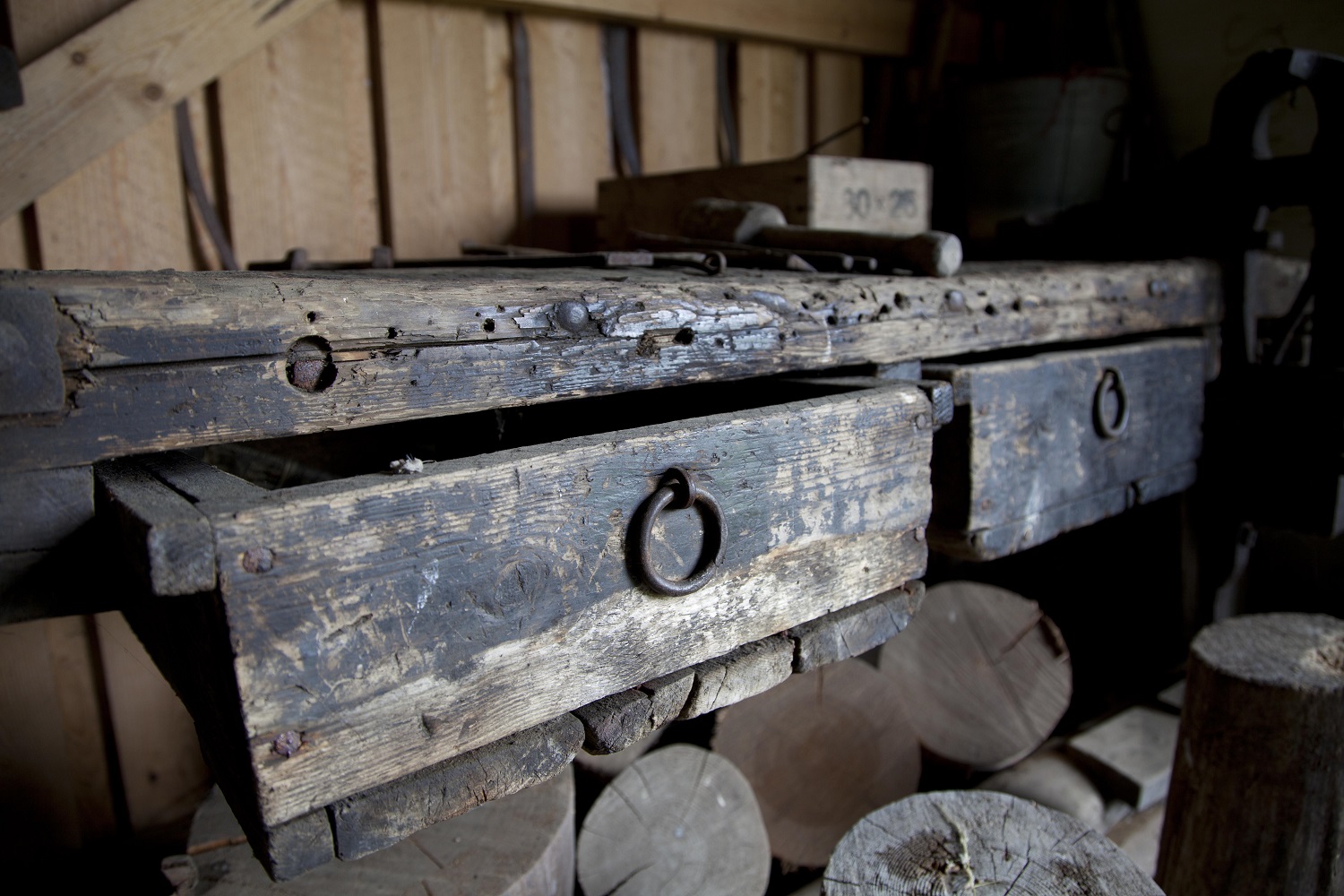
Sysmä
-
The Accordion Museum of Finland (Suomen Harmonikkamuseo) is located in downtown Sysmä. The museum was opened to the general public in 1993. It is based on a private collection collected by motorist Tauno Ylönen as his life’s work.
The museum showcases almost two hundred accordions and more than 50 harmonicas from different countries, but the main focus is on accordions made in Finland. The oldest object in the museum is a German accordion from the year 1850. In addition to musical instruments, the museum exhibits other accordion-related objects and a photo/prize gallery.
The Accordion Museum of Finland also arranges annual themed exhibitions. Visitors can play the accordions themselves, or buy books, magazines and music on accordions from the museum. The Accordion Museum of Finland is a private museum supported by the Association of the Accordion Museum of Finland (Suomen Harmonikkamuseoyhdistys ry).
Tel. 050 565 1219, 03 7170 363
Uotintie 4, 19700 Sysmä
Go to museum’s websiteAn accordion from the collection of the Accordion Museum of Finland.
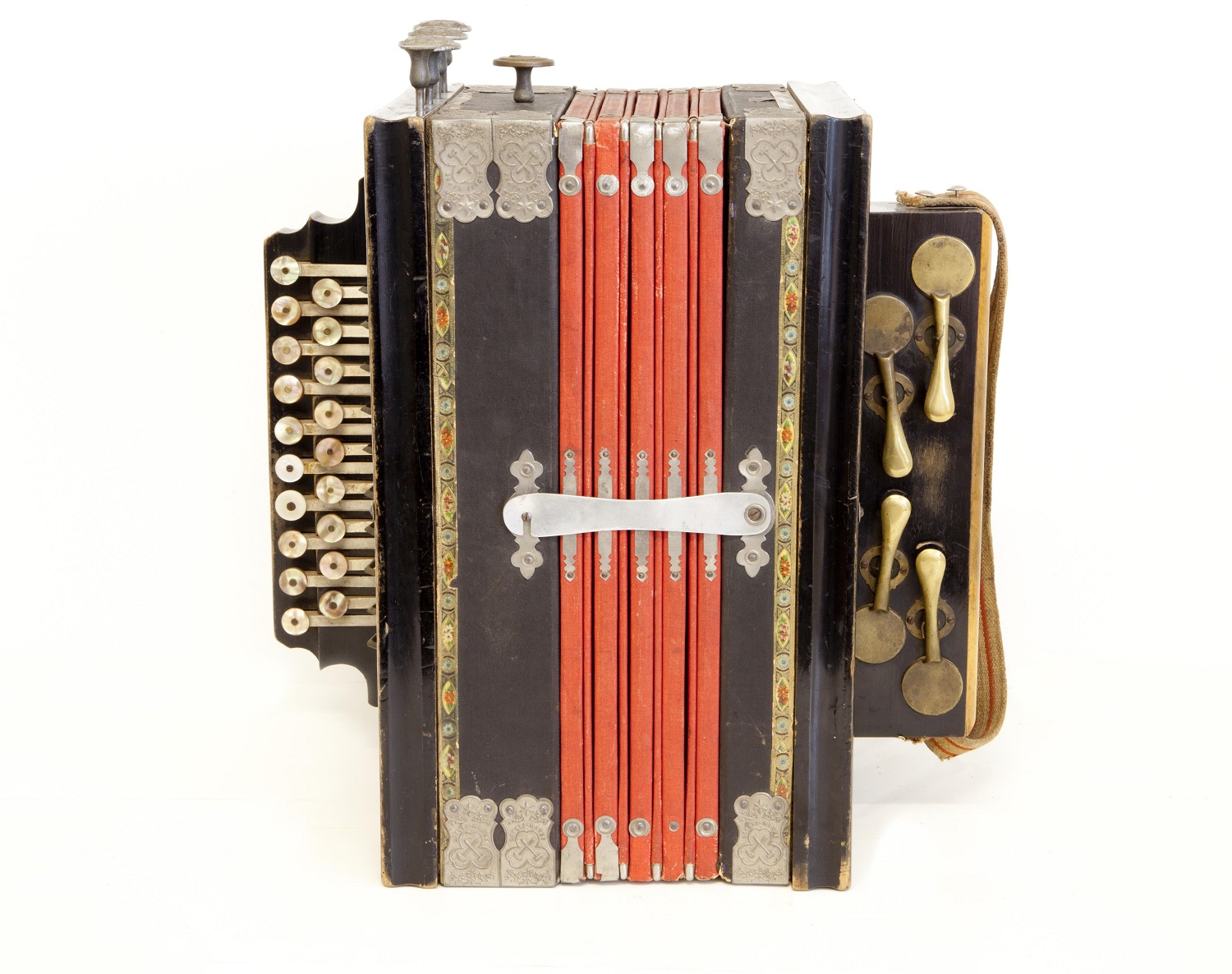
-
Sysmä Local Heritage Museum is located close to the medieval church in Sysmä, the St. Olaf’s Church. The museum has been established in a stone storehouse built in 1845–1855. According to oral tradition, the storehouse was built on a sacrificial rock. The museum has operated in the building since 1962.
The museum covers the history of Sysmä and showcases local objects starting from the prehistoric times. In addition to common agricultural and household objects, the exhibition includes objects associated with the local schools and manor culture. The exhibition also includes objects that can be touched, explored or even sniffed to better sense history.
The yard area of the museum includes a replica of an ancient house that was built in 2010 and appropriately decorated. There are also farm buildings and a boathouse. The museum is operated by the Sysmä Society (Sysmä Seura ry).
The Sysmä Local Heritage Museum is open on Sundays in July from 11 am to 2 pm
Tel. 050 362 9973, 044 548 3905
marja.laajarinne@gmail.com
Makasiininmäentie 4, 19700 Sysmä
Go to museum’s websiteThe old stone grain storehouse that houses the Sysmä Local Heritage Museum.
